Then he was watching for Japanese fighters.
This time, Johnson was looking for North Korean Yak-9U and Ilyushin Il-10 fighters instead of Zeros and Oscars.
Of course, there wasnt much he could do even if he did spot an enemy aircraft.
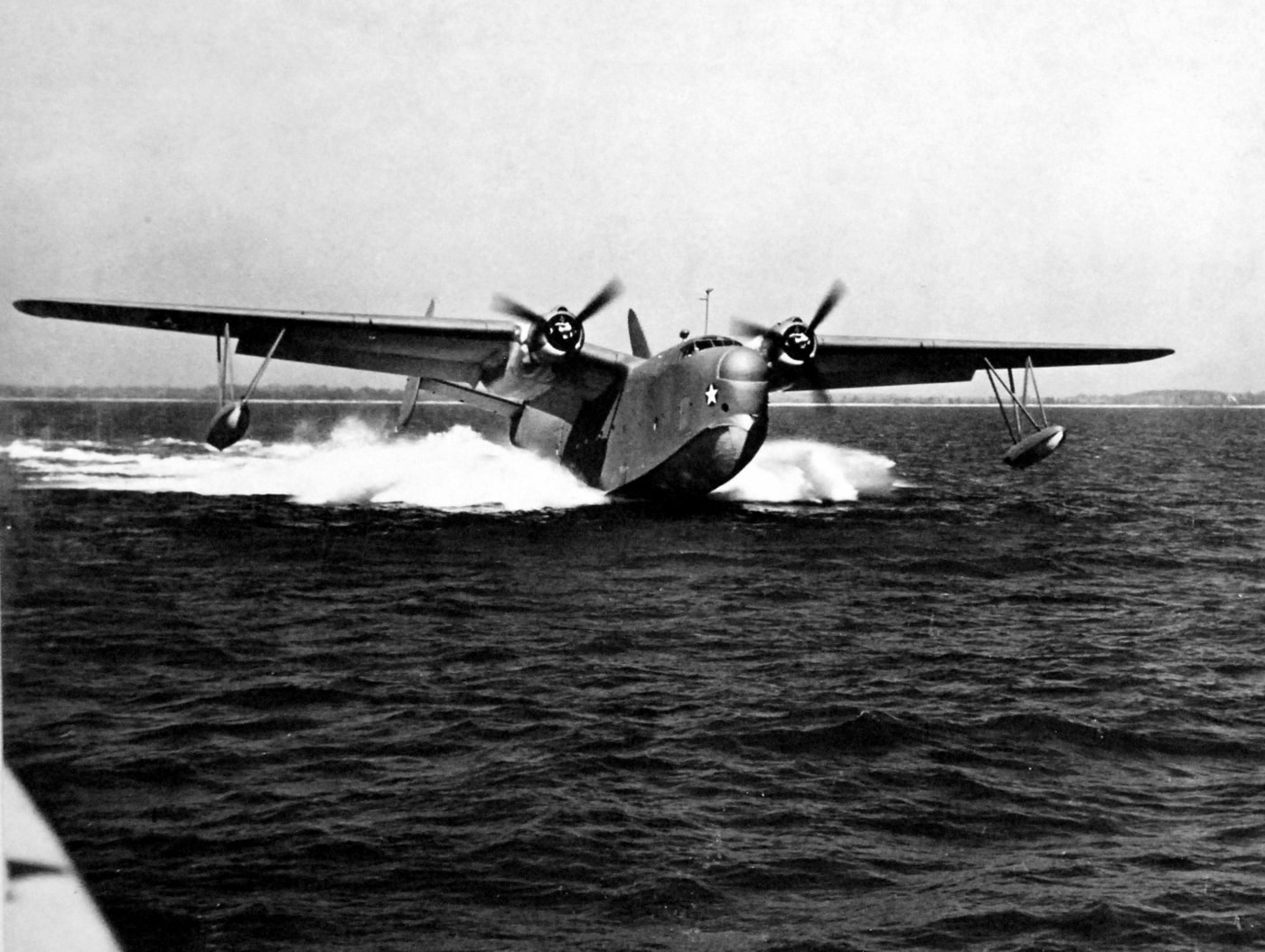
A Martin PBM-3 Mariner lands on the water in early 1943. Note this plane has the three-blade propeller that was less efficient than the four blades used later. Image: Glenn L. Martin Company/U.S. Navy
They needed every ration, bullet and bandage packed into the plane.
The only defensive firepower on the entire plane was the pilotsM1911A1riding in a leather shoulder holster.
None of them had any illusions where that left them.
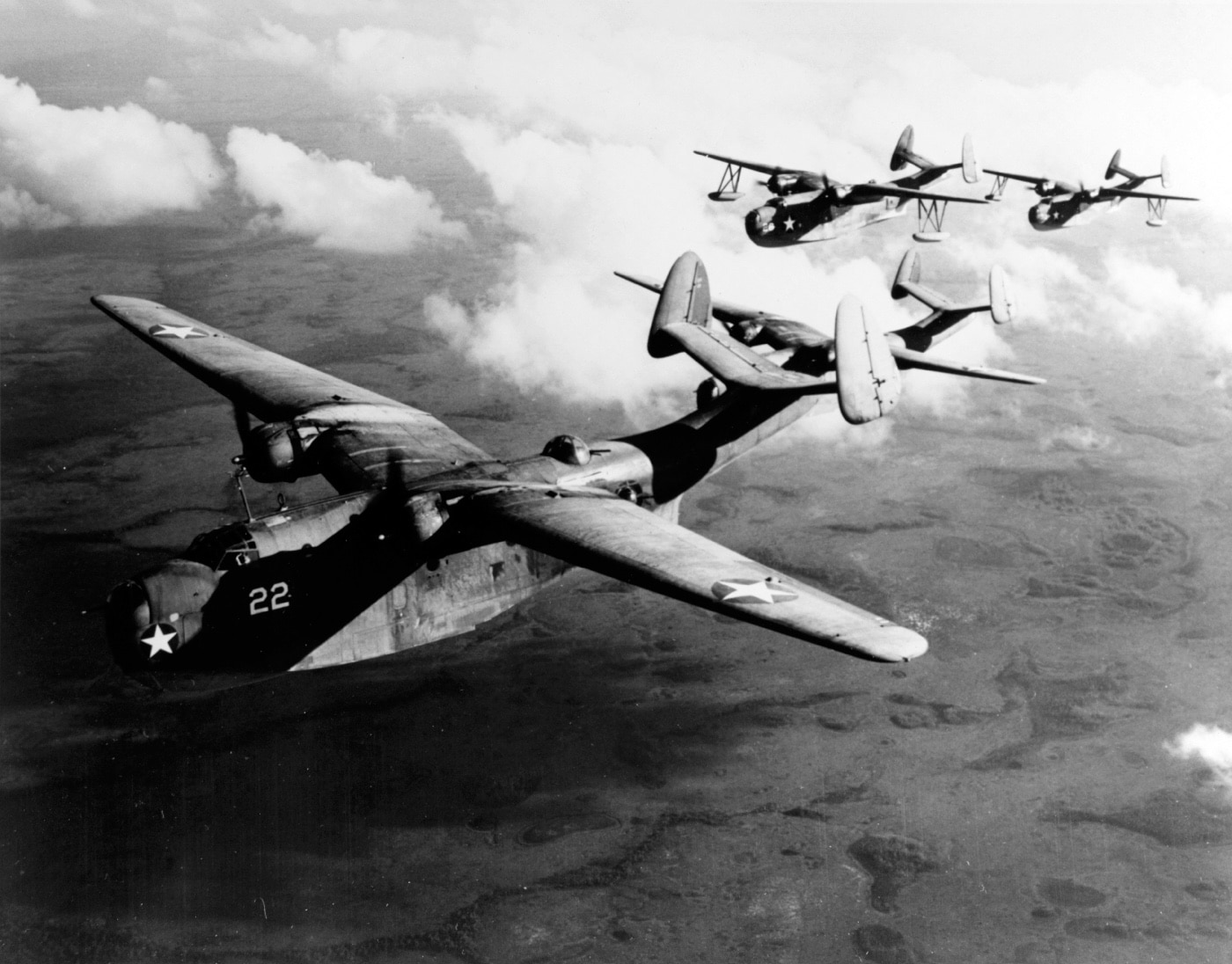
A PBM-1 and PBM-3s in flight along the East Coast in October 1943. These early planes were not fitted with the distinctive radrome behind the cockpit that housed the AN/APS-15 radar. Image: U.S. Navy
If they were jumped by a North Korean pilot, they would be lucky to survive.
Johnson checked his watch.
We should be getting pretty close to Puson, he thought.
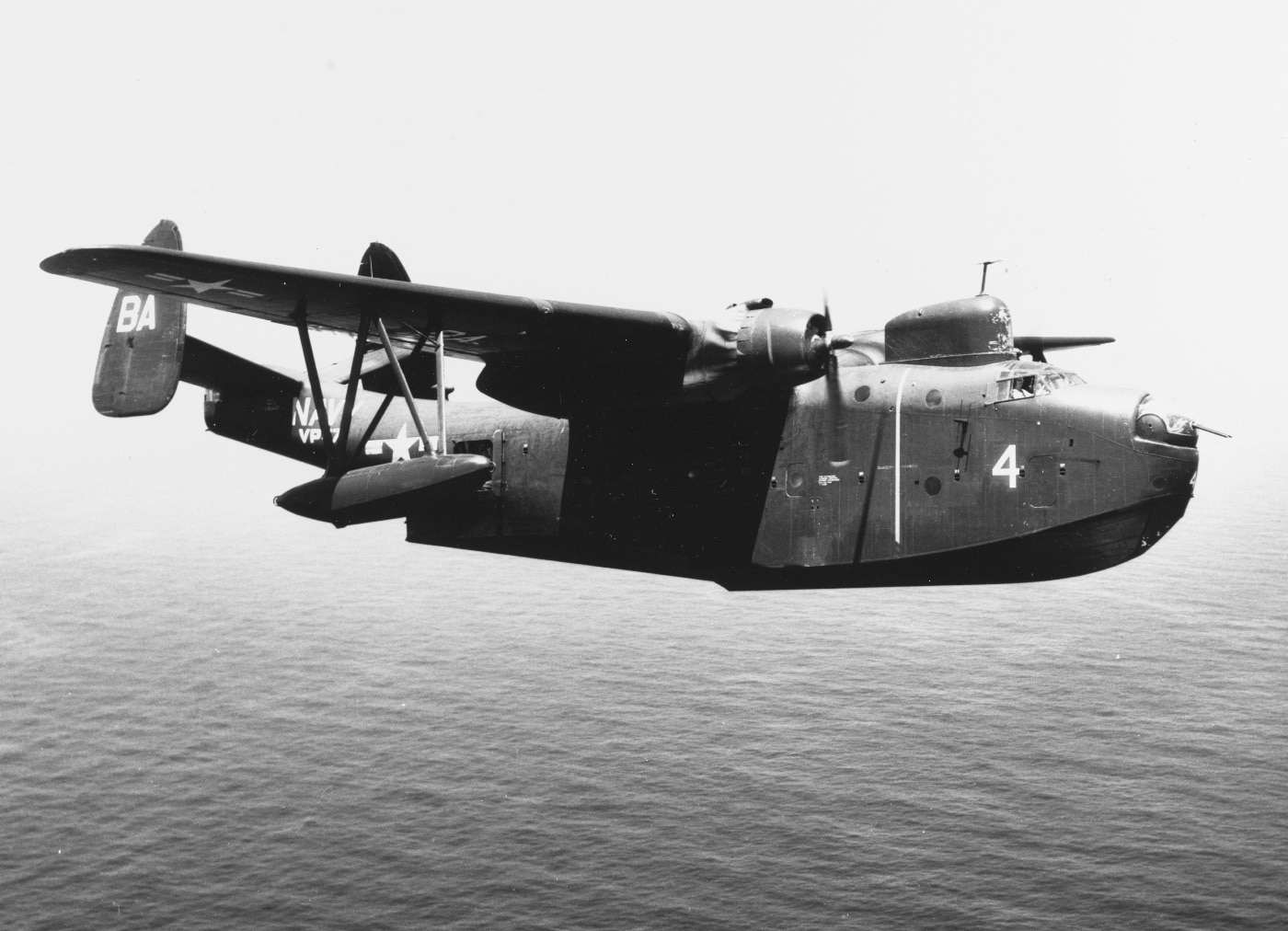
This Martin PBM-5 is in flight over the Pacific Ocean. It was part of Patrol Squadron 47 (VP-47) based at NAS San Diego (later NAS North Island). Image: U.S. Navy
He settled back into his position and kept an eye on all the gauges.
Shortly, the plane began to make a turn as the pilot lined up for a landing.
A slight amount of comfort crept in as Johnson thought they had made another successful run.
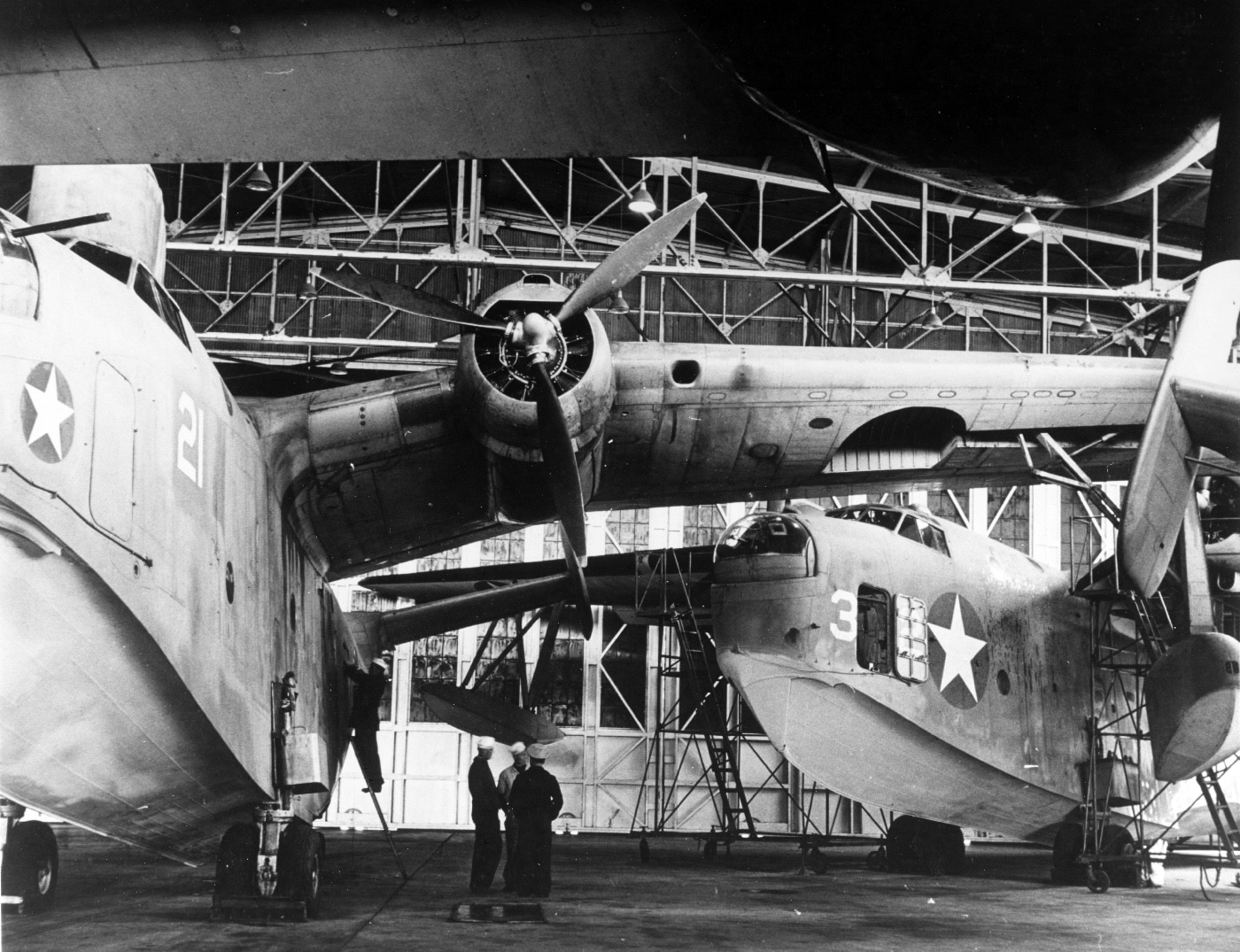
Martin PBM patrol bombers in a hangar at NAS Banana River, Florida. The plane at left is a PBM-1 with retractable wing floats. Behind is a fixed-float PBM-3 Model. Image: Lt. Cmdr. Charles Kerlee/U.S. Navy
But now, the hard work started.
Listening for commands from the pilot, Johnson got to work.
Its hard to appreciate how much bigger the PBM was until you saw one side-by-side with a B-17.
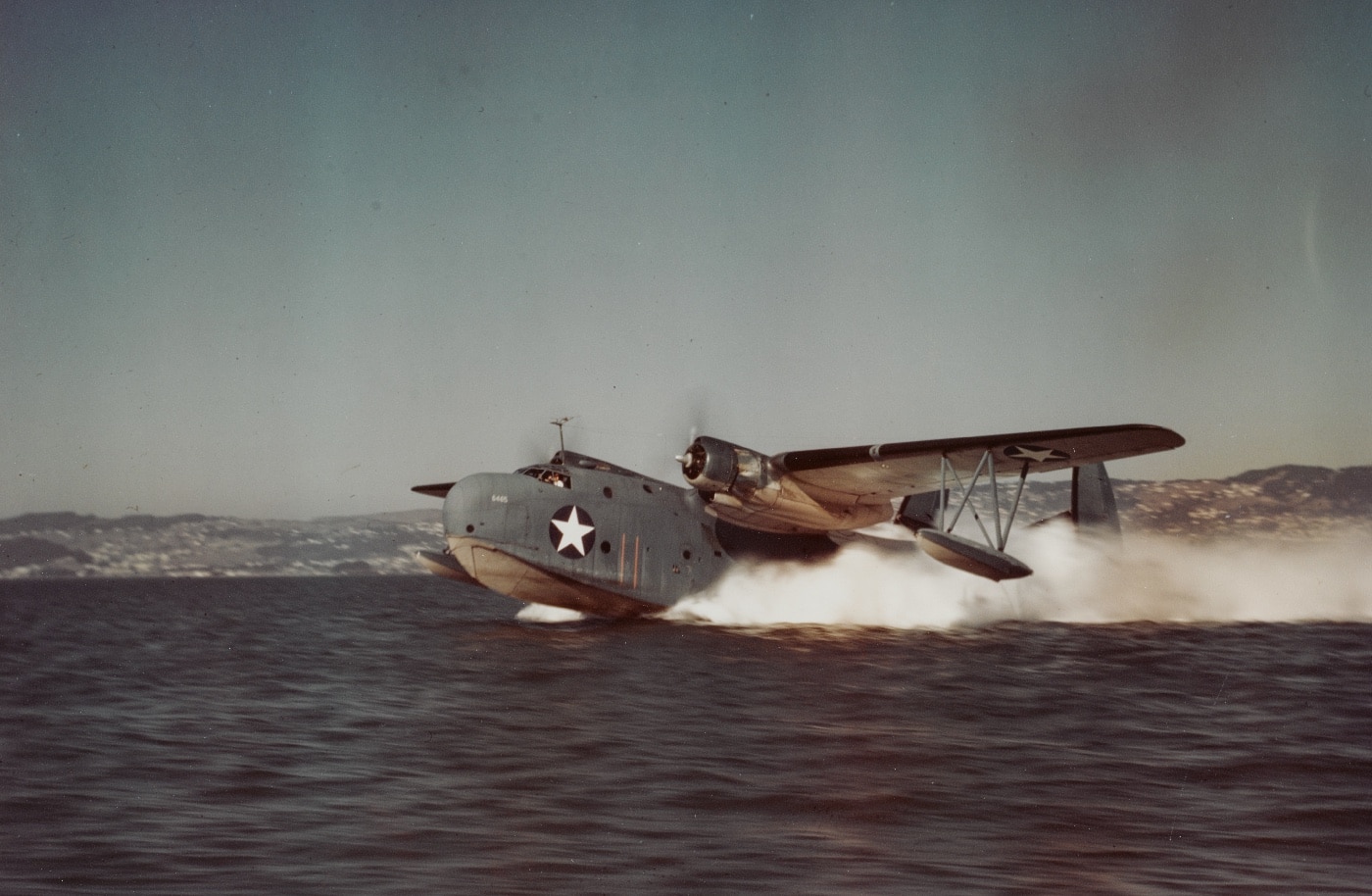
A Martin PBM-3R takes off from the water, circa 1943. The PBM-3R was an unarmed transport variant of the Mariner. Image: U.S. Navy
In fact, with a similar payload, the PBM had longer legs than the Fortress.
And if needed, the PBM could fly for hours on a single engine.
Unlike the B-17, the Martin PBM was designed to take off and land on the water.
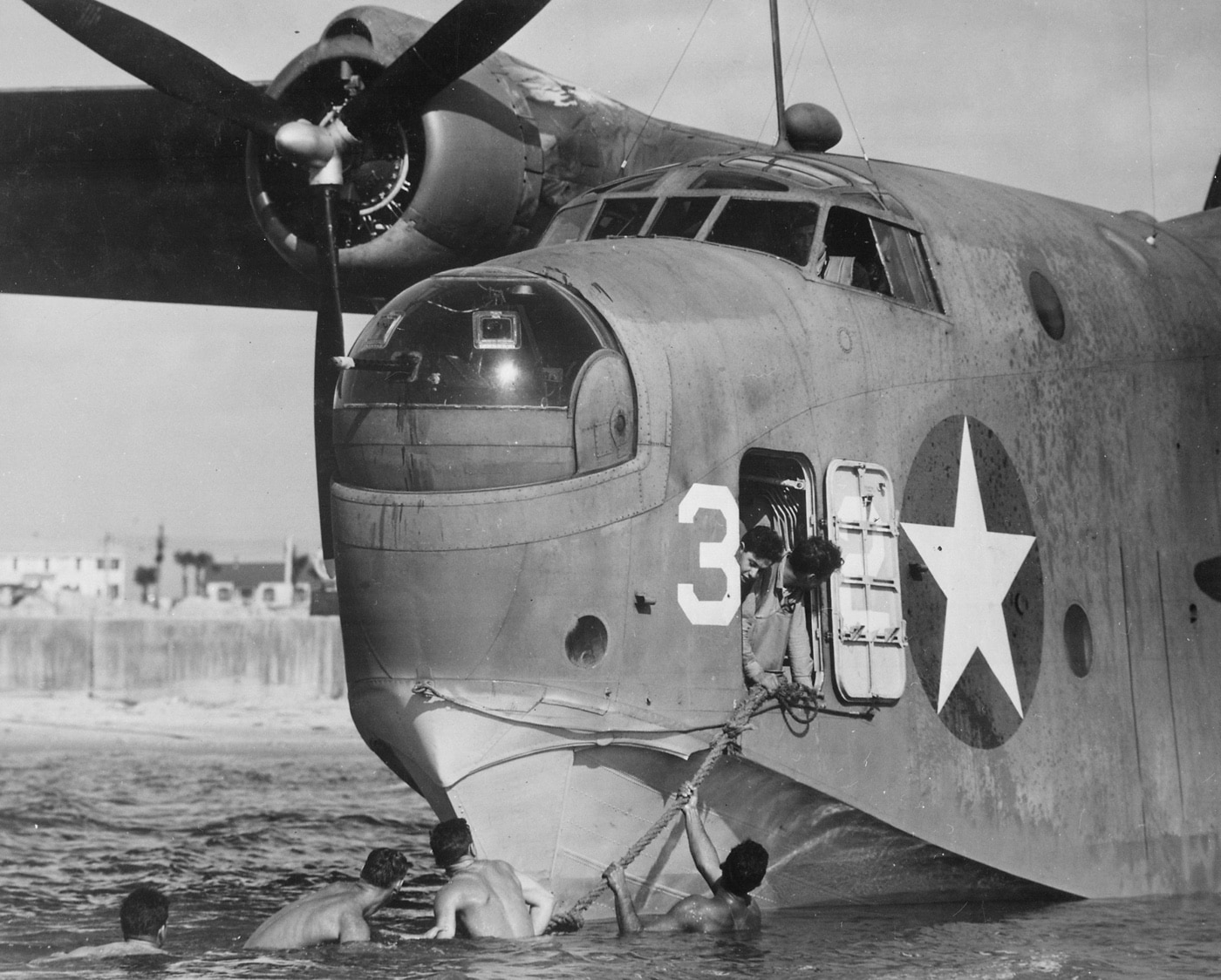
A beaching crew prepares a PBM for removal from the water. This early PBM variant has a single M2 machine gun in the nose turret and lacks the large radrome typical of later models. Image: U.S. Navy
What Is a Flying Boat?
During the Golden Age of Flight, things were different than they are today.
Innovation and experimentation were much more common.
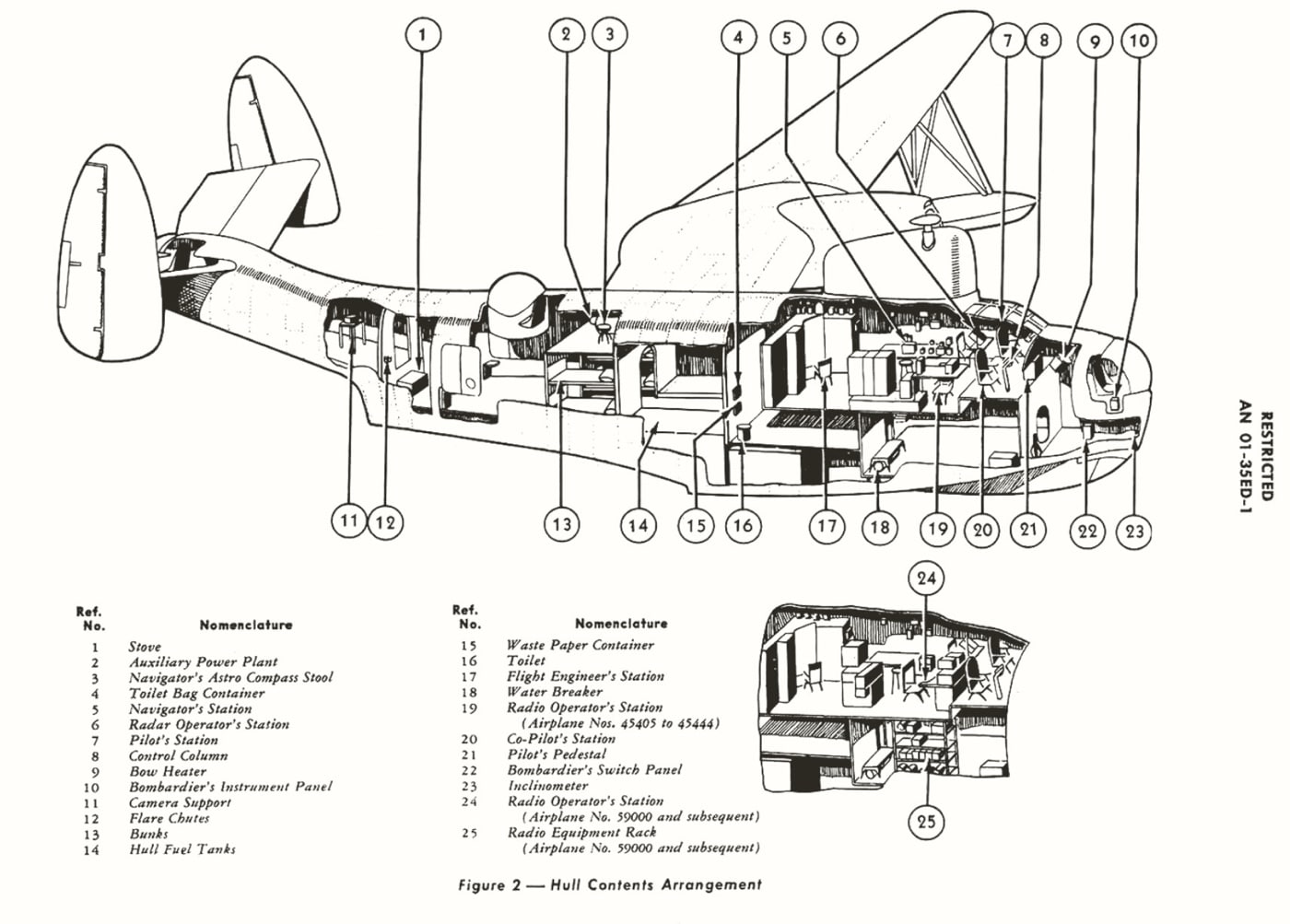
This diagram shows various crew positions and other areas of the PBM-5 model of Mariner. Image: U.S. Navy
Designers often came up with imaginative solutions to the technical limitations of the era.
The flying boat design was one approach that proved popular.
Nevertheless, the design fell out of favor by the 1960s.
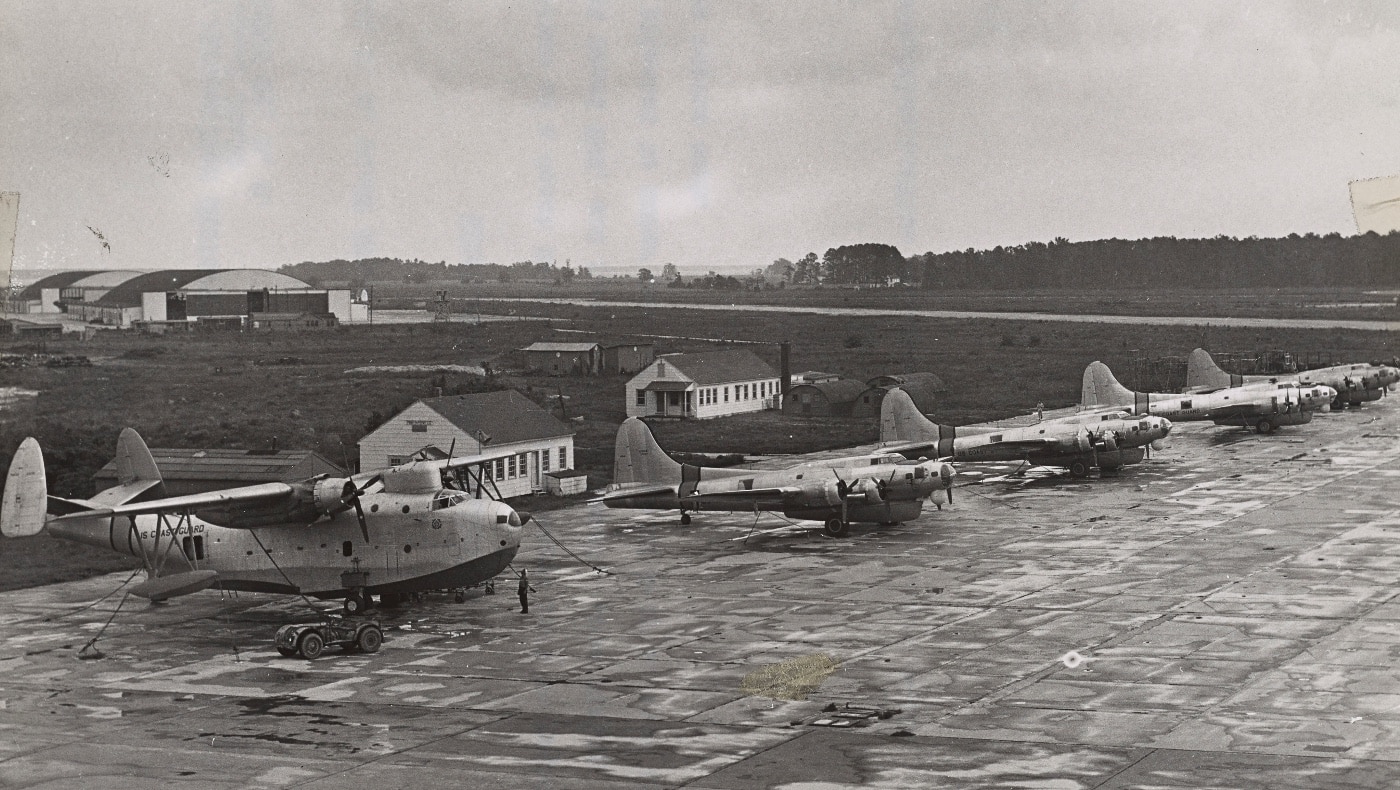
Scene at a Coast Guard Air Station shows left to right a Coast Guard PBM, and four B-17’s. Note flying boats attached to under-part of fuselage of B-17’s, used in air-sea rescue work. Image: NARA
It might surprise younger readers, but the flying boat used to be a significant part of aviation.
Because hull integrity is a real thing, the vast majority of Mariners did not have traditional landing gear.
That meant that PBM aircraft could only take off and land in the water.
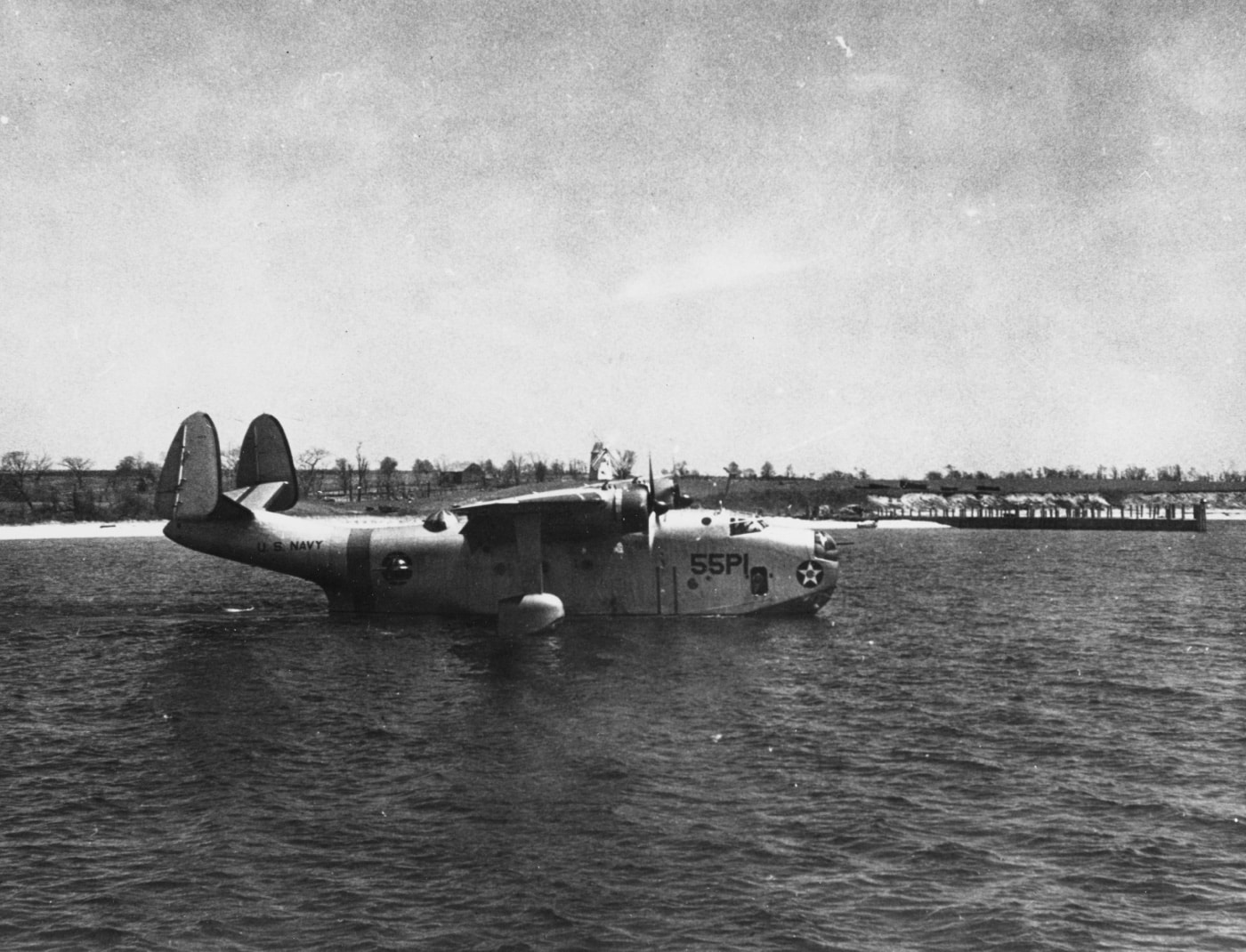
This Martin PBM-1 Mariner patrol bomber was assigned to Patrol Squadron VP-55 in 1940. It is one of the first PBMs to be built and enter service. Image: U.S. Navy
Aircraft could be refueled and supplied on the water.
For servicing, they could be lifted by a seaplane tender out of the ocean.
Likewise, they could be fitted with temporary beaching gear so the aircraft could be pulled onto land.
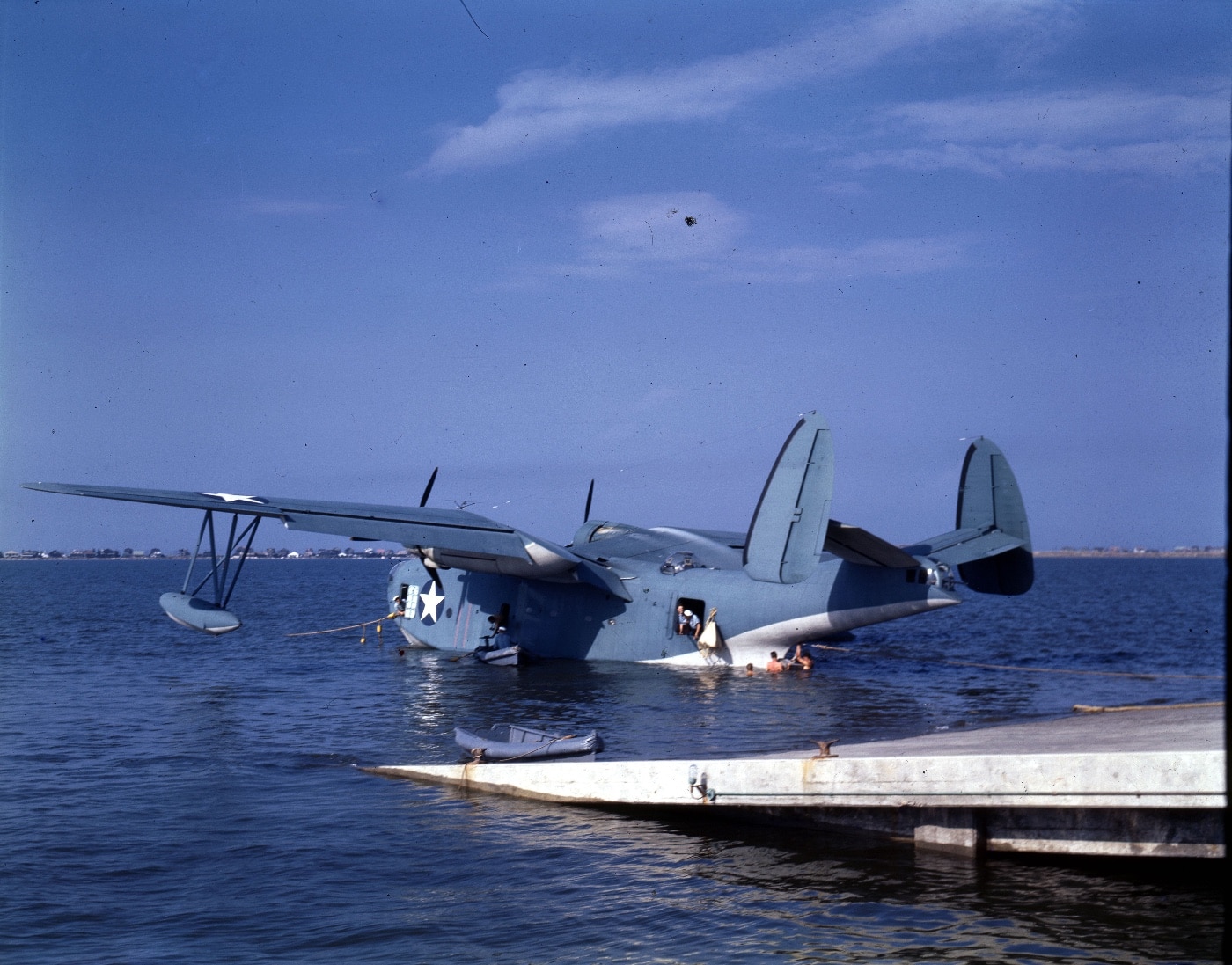
Sailors beach a Martin PBM at NAS Norfolk. Once the temporary beaching gear was attached, the ground crew could tractor the PBM out of the water. Image: NARA
Believe it or not, flying boats are still used today.
The first PBMs to enter service could carry 4,000 pounds of bombs.
PBM Mariners could deliver a variety of ordnance including 500-lb., 1000-lb.
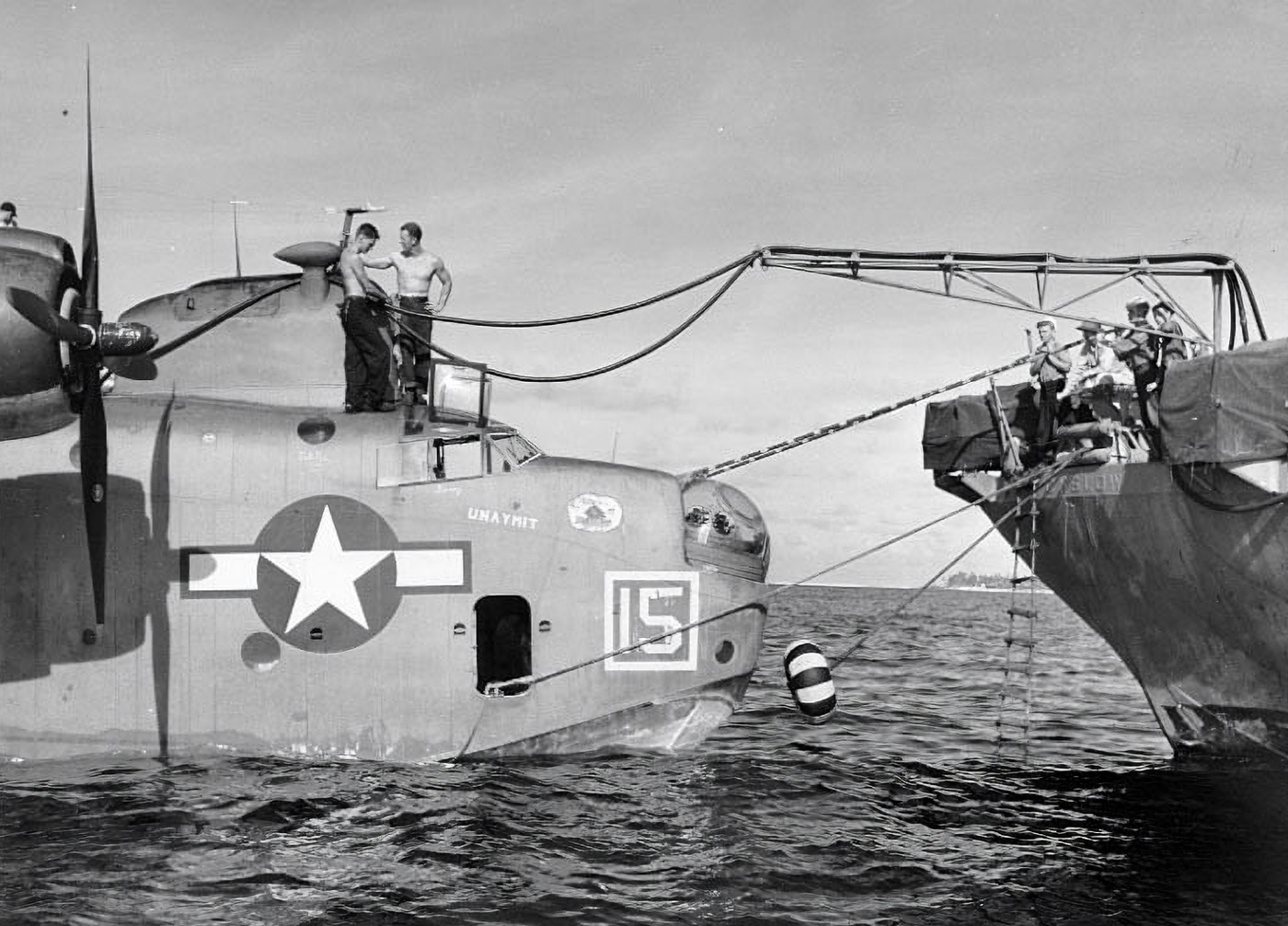
The USSOnslow(AVP-48), aBarnegat-class seaplane tender, refuels a PBM patrol bomber at sea in December 1944. Image: U.S. Navy
bombs, depth charges, mines and torpedoes.
Bombs were loaded in enclosed compartments in both wings below the engine nacelles.
This allowed the plane to remain streamlined while ensuring the integrity of the watertight hull.
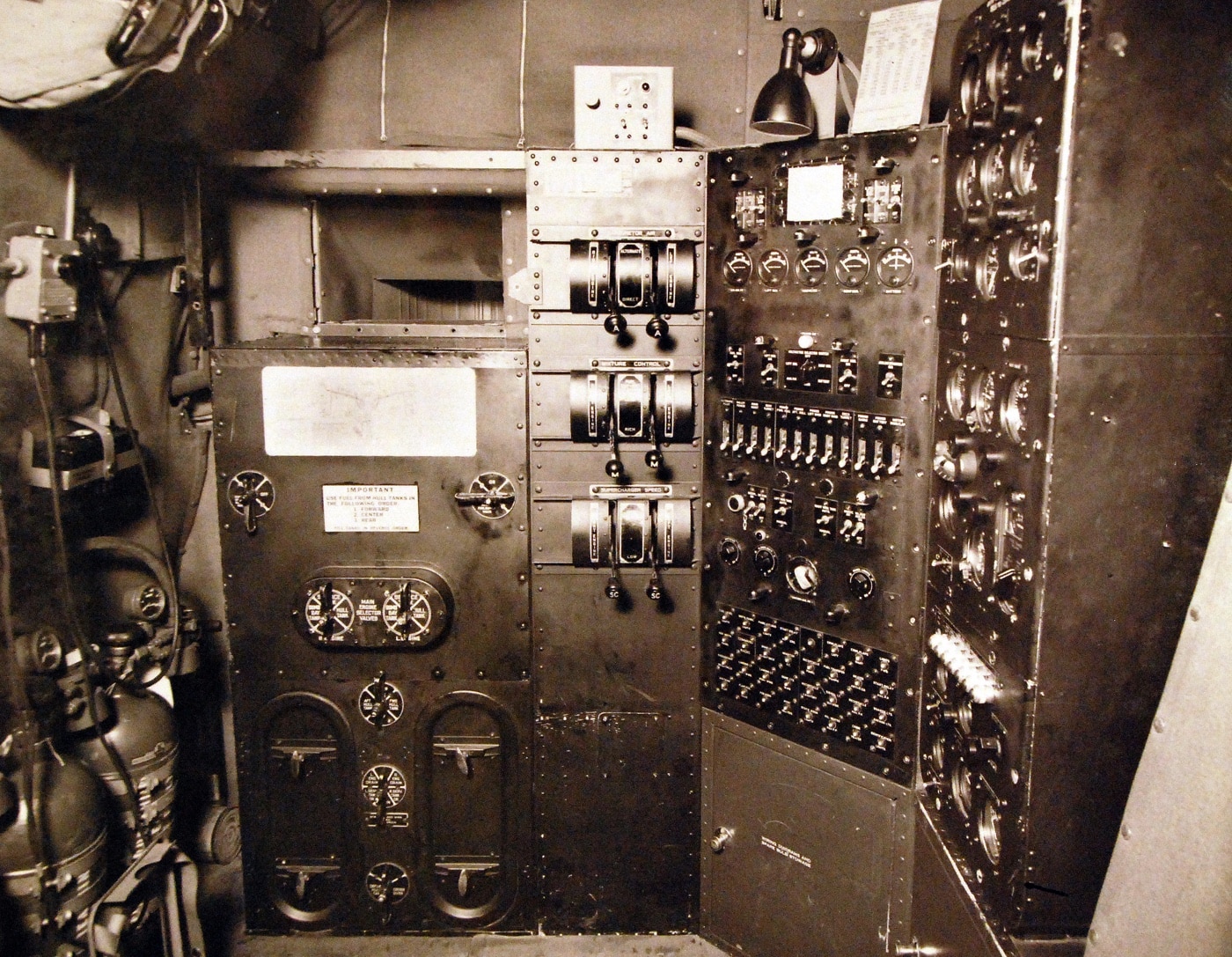
Shown here is the flight engineer’s station on a Martin PBM-3C. The -3C was an upgraded Mariner with more powerful engines and additional .50-caliber machine guns. Image: U.S. Navy
Additionally, torpedoes could be attached to the exterior of the PBM wings.
As with many capable military planes, there were a variety of models made.
Bristling with Guns Armament
PBM patrol bombers were most often equipped with Browning M2 .50-caliber machine guns.
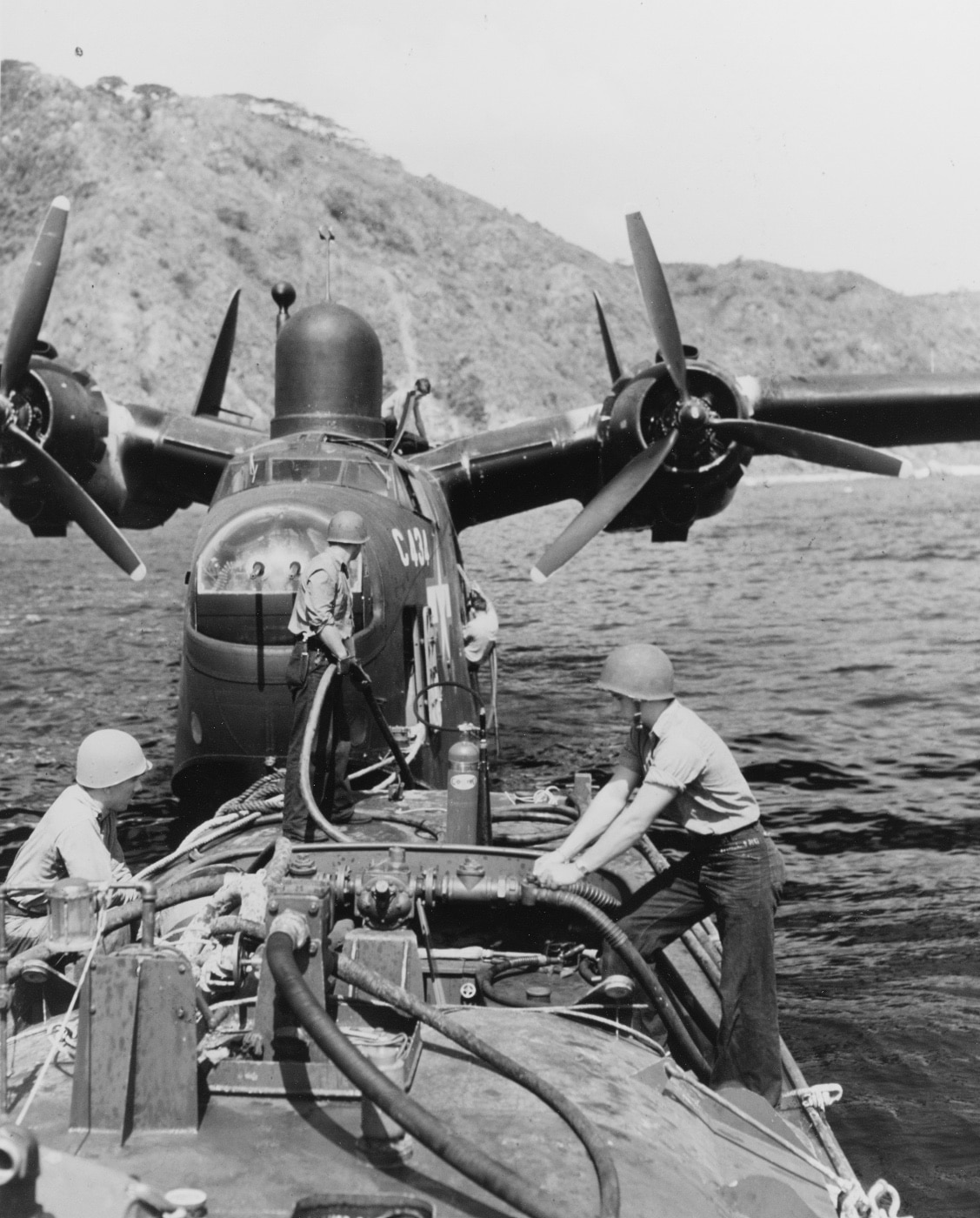
A Martin PBM-5 Mariner patrol bomber of Fleet Air Wing One refuels from a fuel bowser boat in Tanapag Harbor, Saipan, May 1945. Image: U.S. Navy
They were intended for two purposes defense against enemy fighters and attacking surfaced submarines.
Over in the Pacific Theater, PBMs downed multiple Japanese fighters that mistook the PBM for an easy target.
In many configurations, the PBM had eight M2 machine guns.
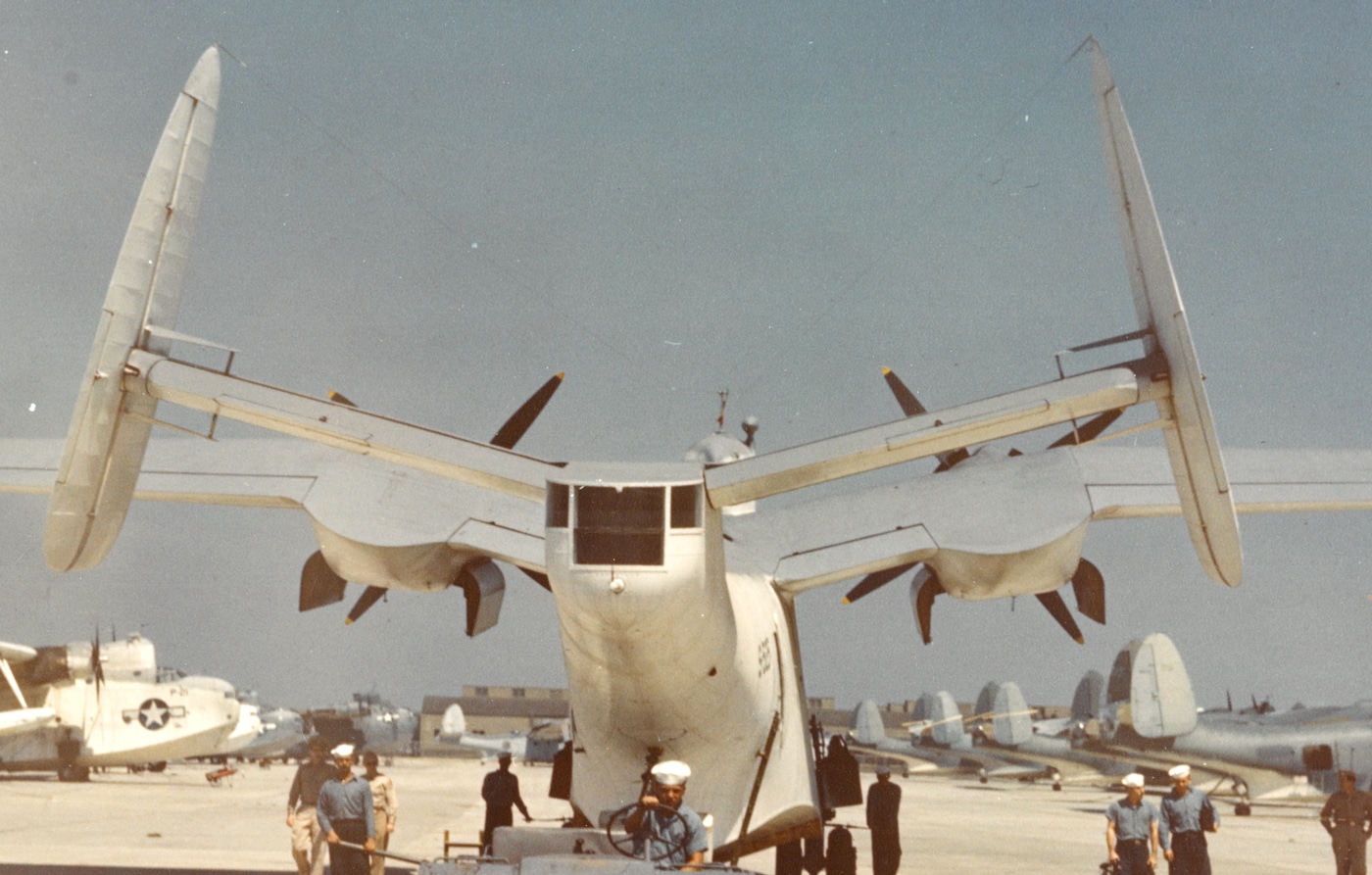
A specialized submarine hunter, this Martin PBM-3S is seen here with open bomb bay doors at the engine nacelles. Image: U.S. Navy
Transport models typically had no machine guns.
The planes were quite versatile and readily accepted multiple configurations.
Anti-Submarine Patrols
Martin PBM aircraft were used in a wide range of activities.
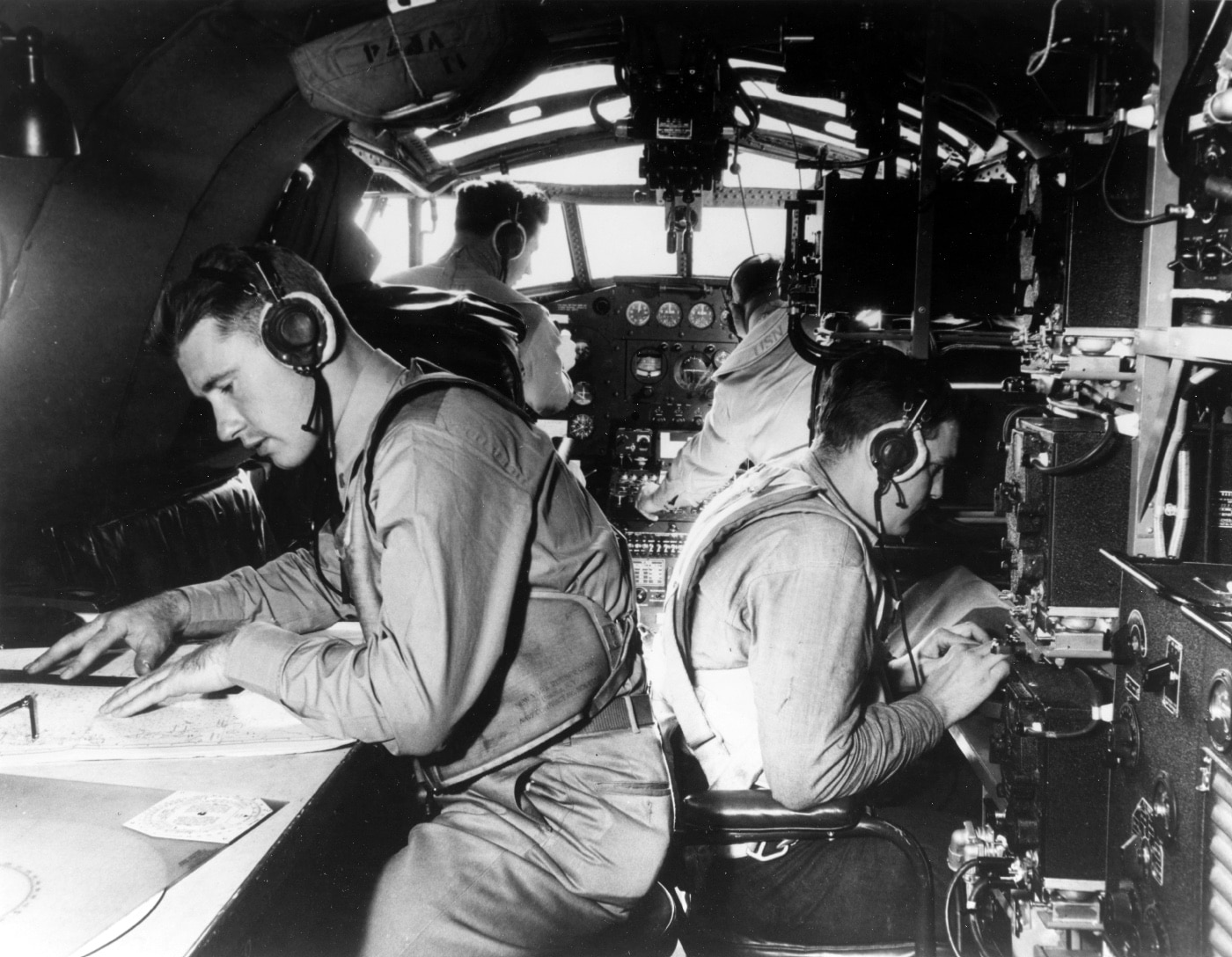
Navigator, radioman and pilots at work prior to take-off at NAS Norfolk during 1942. The pilots and navigator were all officers, while the remaining crew were enlisted sailors. Image: U.S. Navy
It is probably best known for its sub hunting capabilities in World War II.
PBM patrol bombers could be equipped with depth charges and Mark 13 torpedoes.
Torpedoes were used against surface ships.
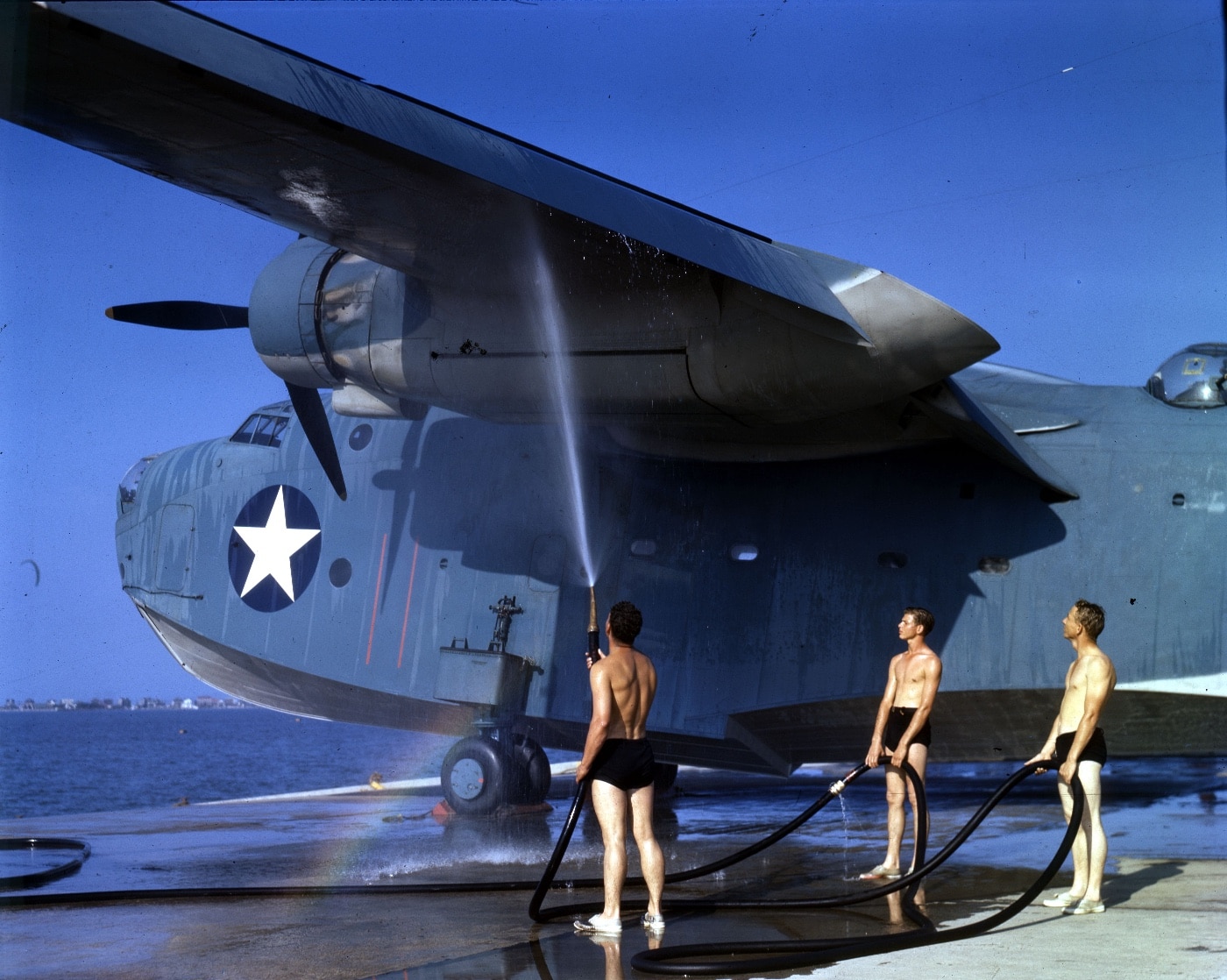
These sailors wash their PBM-3 after a patrol mission in 1942. The bomb bay doors (closed) can be seen on the underside of the wing. Image: NARA
Neutrality Patrol in the Atlantic
Starting in 1939, war raged in Europe.
German U-boats prowled the Atlantic Ocean seeking to stop men and supplies from reaching Europe.
At the same time, Allied naval forces blockaded Germany.
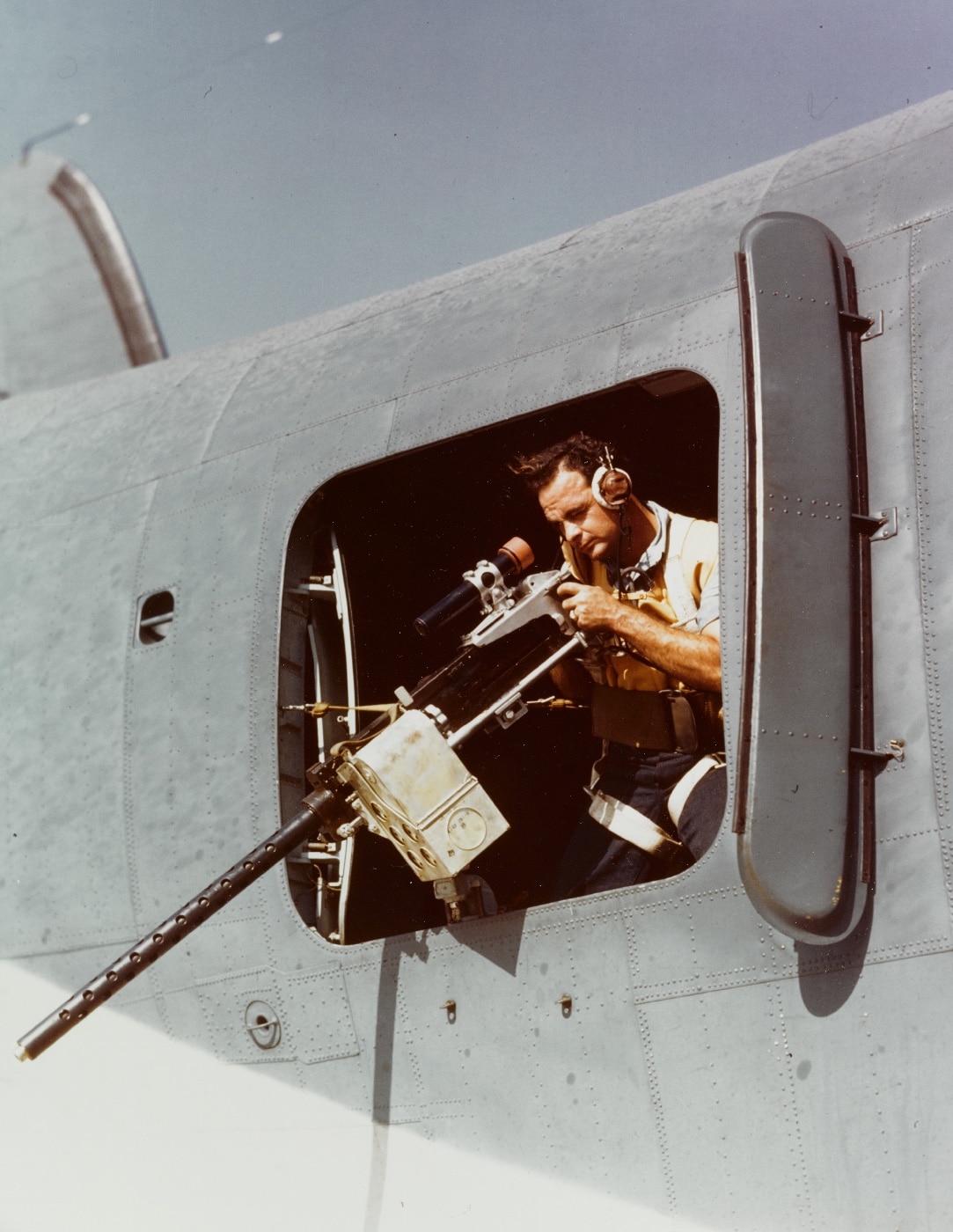
Martin PBM Mariner patrol bomber starboard waist gunner demonstrates hisM2 Browning heavy machine gunchambered in .50 BMG. Note the position’s retractable wind shield. Image: U.S. Navy
Called the Battle of the Atlantic, it was the longest continuous campaign of the Second World War.
Ostensibly, the United States was neutral at the outset of hostilities.
Within days of panzers rolling into Poland, President Franklin D. Roosevelt declared the United States a neutral power.
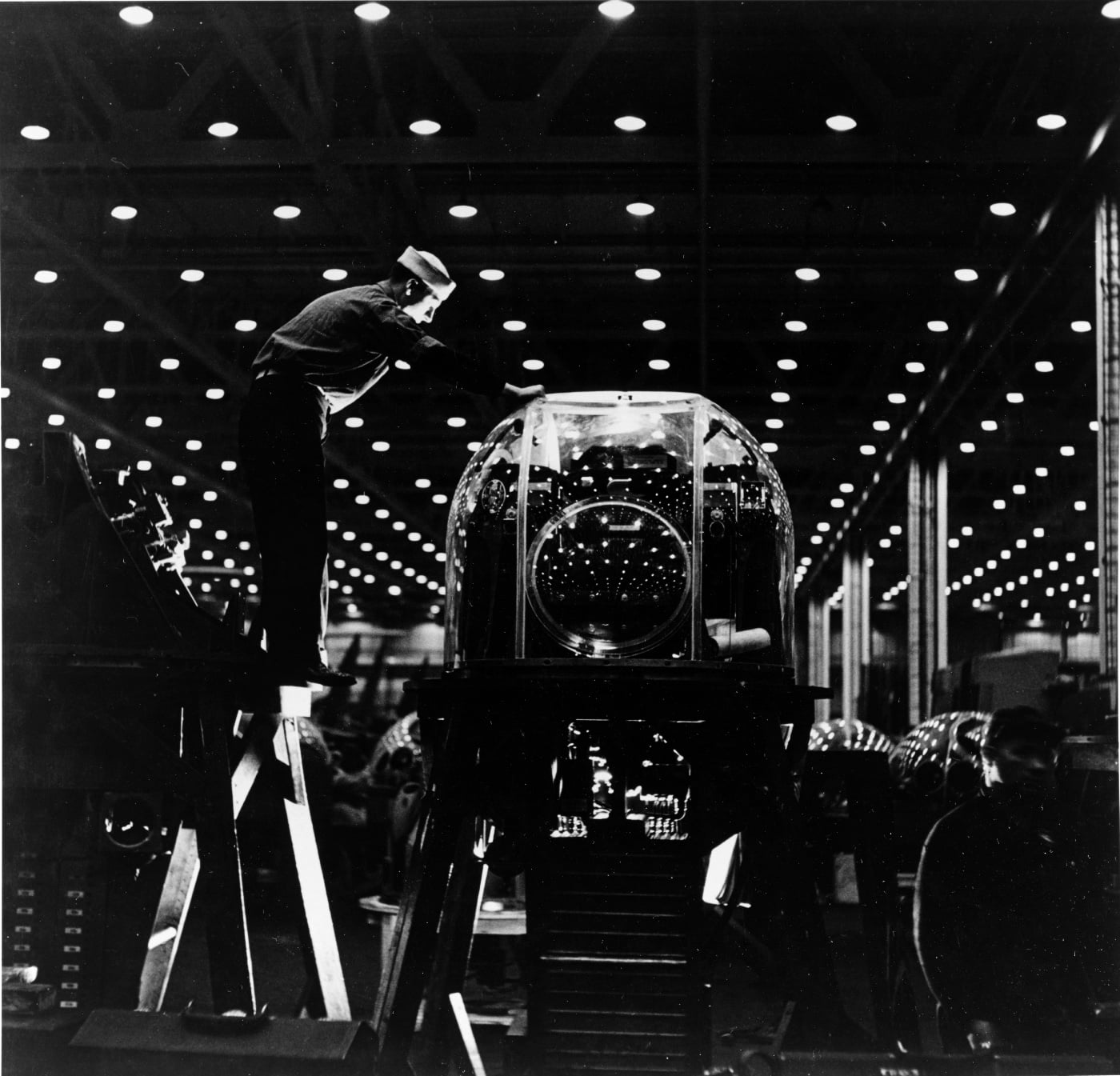
Machine gun turrets for the PBM being assembled and tested in 1943 at the Glenn L. Martin Aircraft Factory in Baltimore. Image: Lt. Charles F. Jacobs/U.S. Navy
Shortly thereafter, the U.S. Navy began the Neutrality Patrol using both ships and planes to defend American interests.
In July of 1941, British ASV radar units were added to a pair of PBM patrol bombers.
PBM crews saw extensive service in this region.
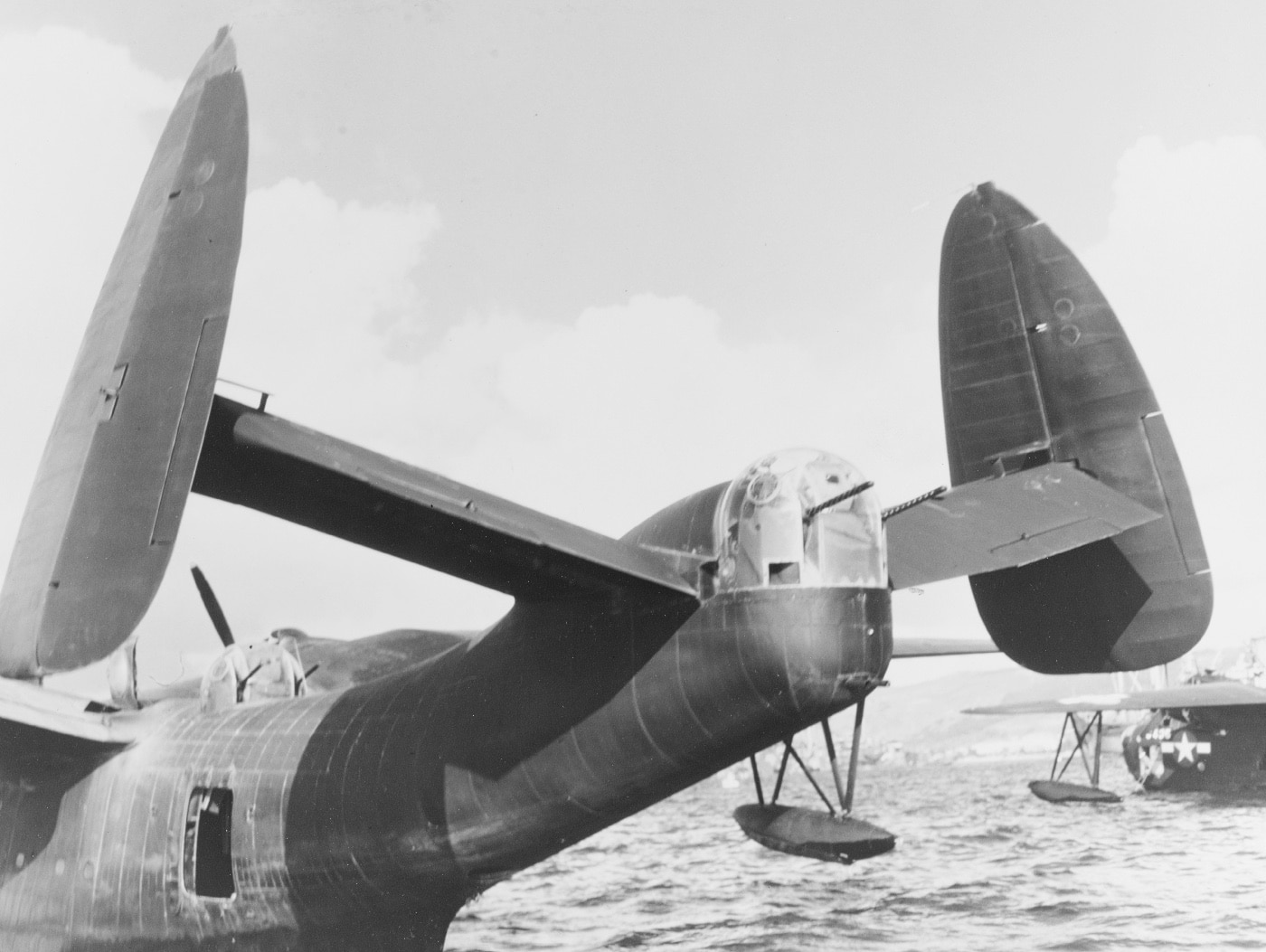
The twin .50-caliber machine gun turrets are visible in this April 1945 photo of a Martin PBM-5 anchored in Tanapag Harbor, Saipan. Image: U.S. Navy
In the summer of 1943 alone, Martin PBMs sank five German U-boats in the Caribbean and surrounding waters.
However, Germany had upgraded its anti-aircraft capabilities on U-boats, and they were a much more dangerous prey.
A quad-20mm autocannon was installed on some U-boats.
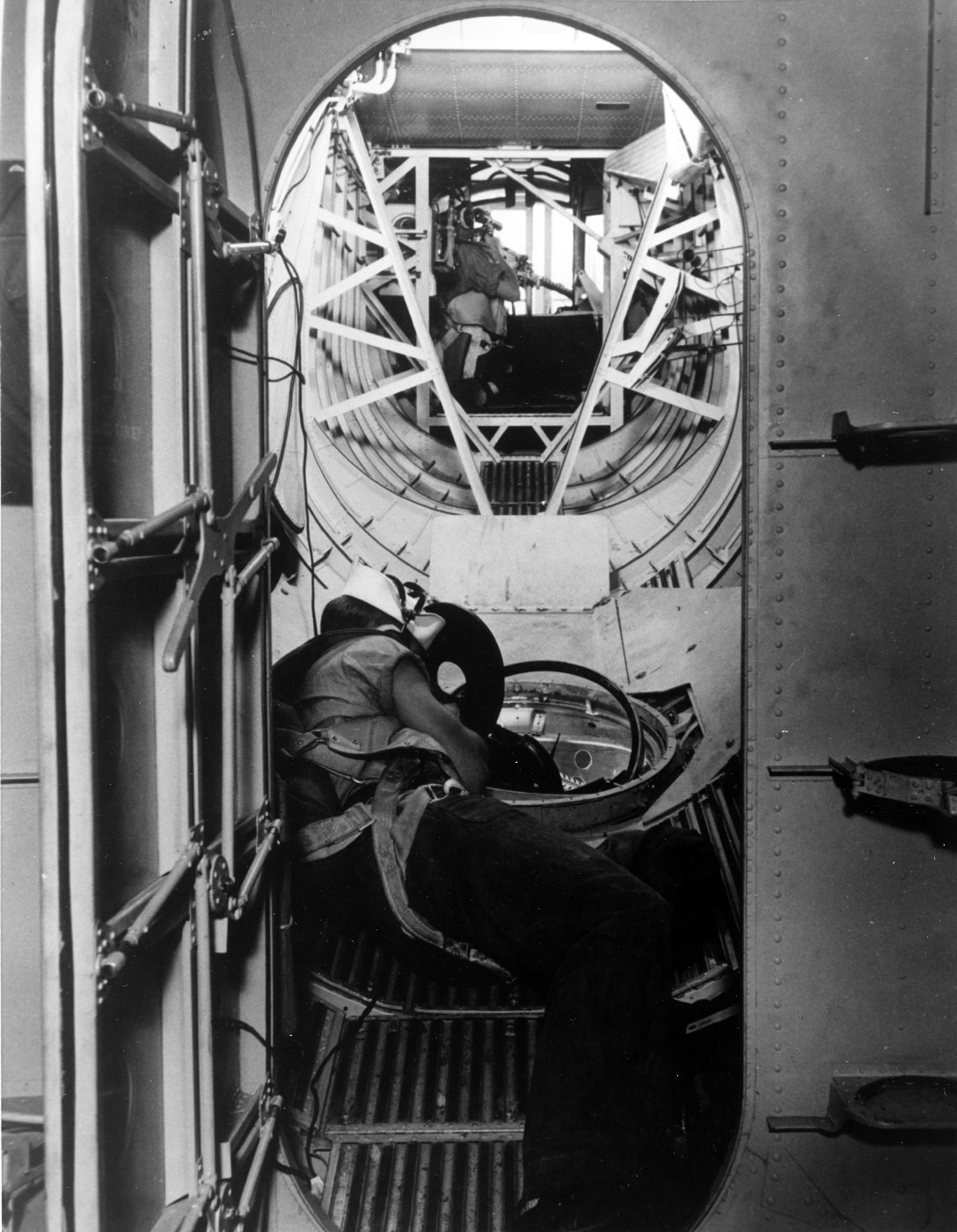
Interior view, looking aft, of a PBM-3. The shooting position in the deck is for a .30-caliber machine gun. The Browning M2 is visible in the tail. A watertight door is in the foreground. Image: U.S. Navy
Called the Flakvierling 38, these AA guns were lethal against low-flying aircraft.
Three PBMs were shot down and several more were significantly damaged.
Most frequently, PBMs operated solo.
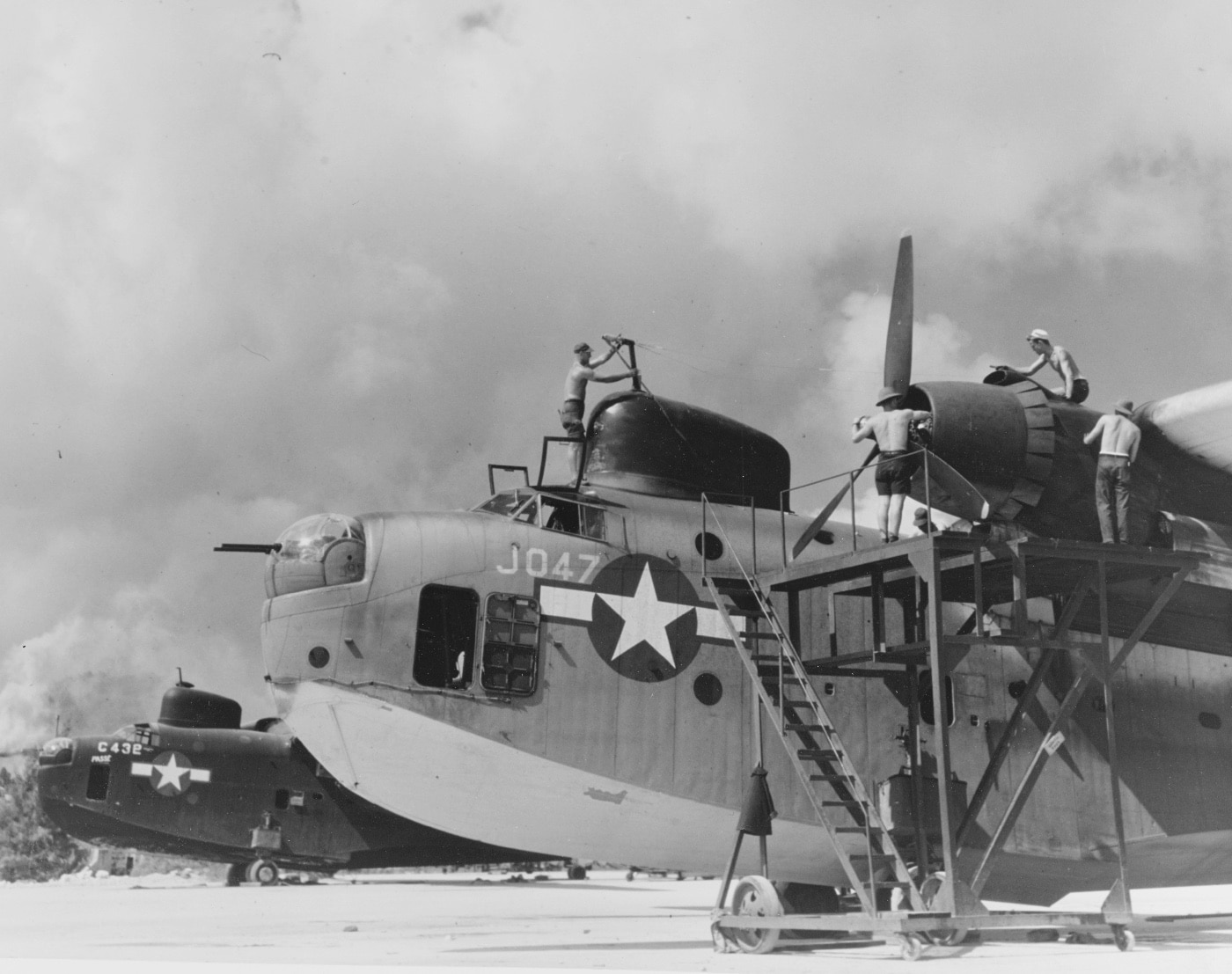
PBM patrol bombers undergo maintenance at Tanapag Air Facility, Saipan in April 1945. Twin .50-caliber machine guns can be seen in the nose turret. Image: U.S. Navy
That means the crews had to be self-sufficient and work well together.
Sailors cross-trained to other positions on the plane to increase resiliency in combat.
Attacks on ships and subs while on patrol were often conducted alone.
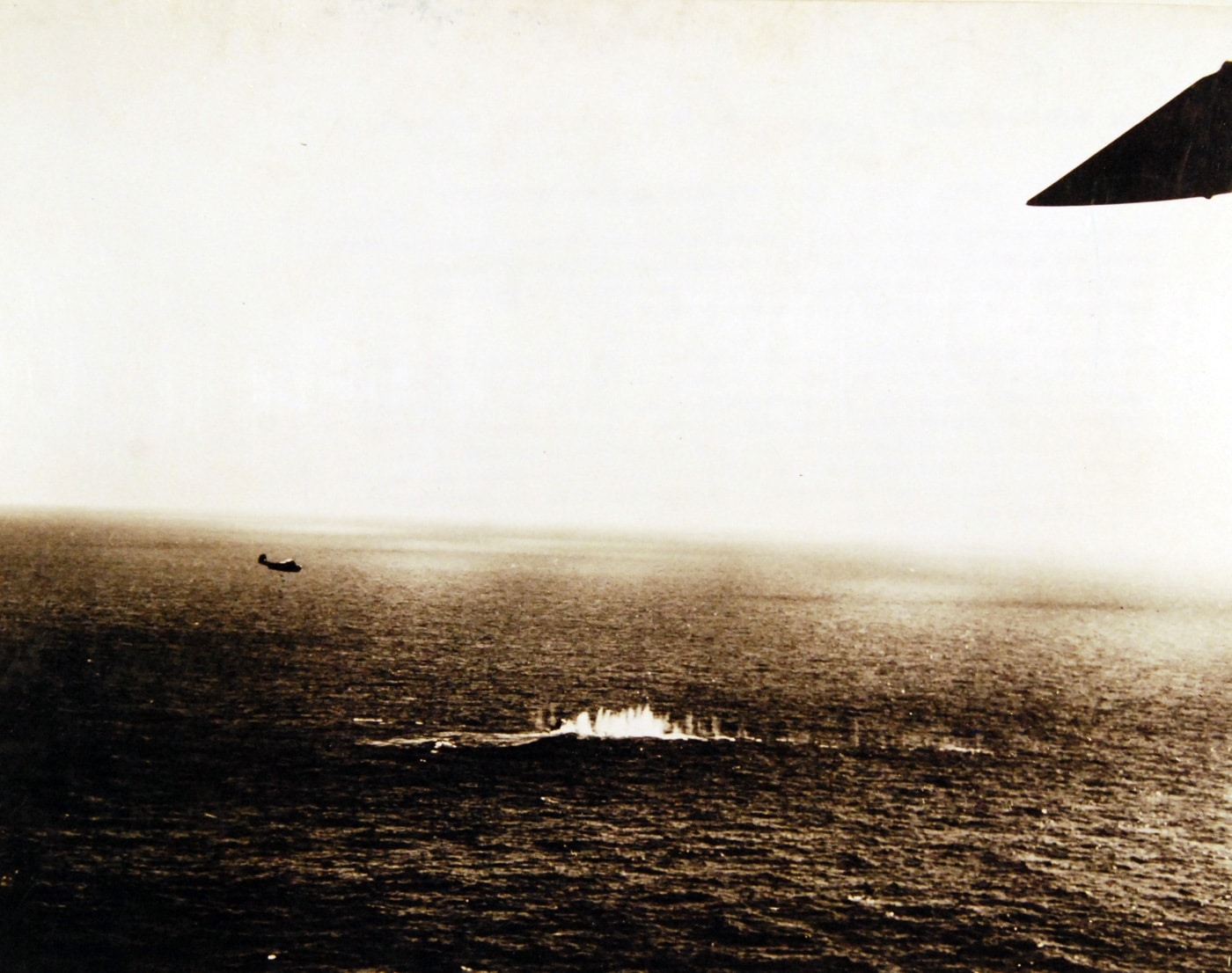
Two Martin PBM Mariners attack U-128, a German IXC U-boat, in May 1943. The visible PBM dropped depth charge bombs on the submarine while the second PBM made machine gun runs. Image: U.S. Navy
For attacks on land targets and harbors, several PBMs would act as a team.
This typically meant that two, three or four Mariners would act in concert.
Mass bombing raids were uncommon.
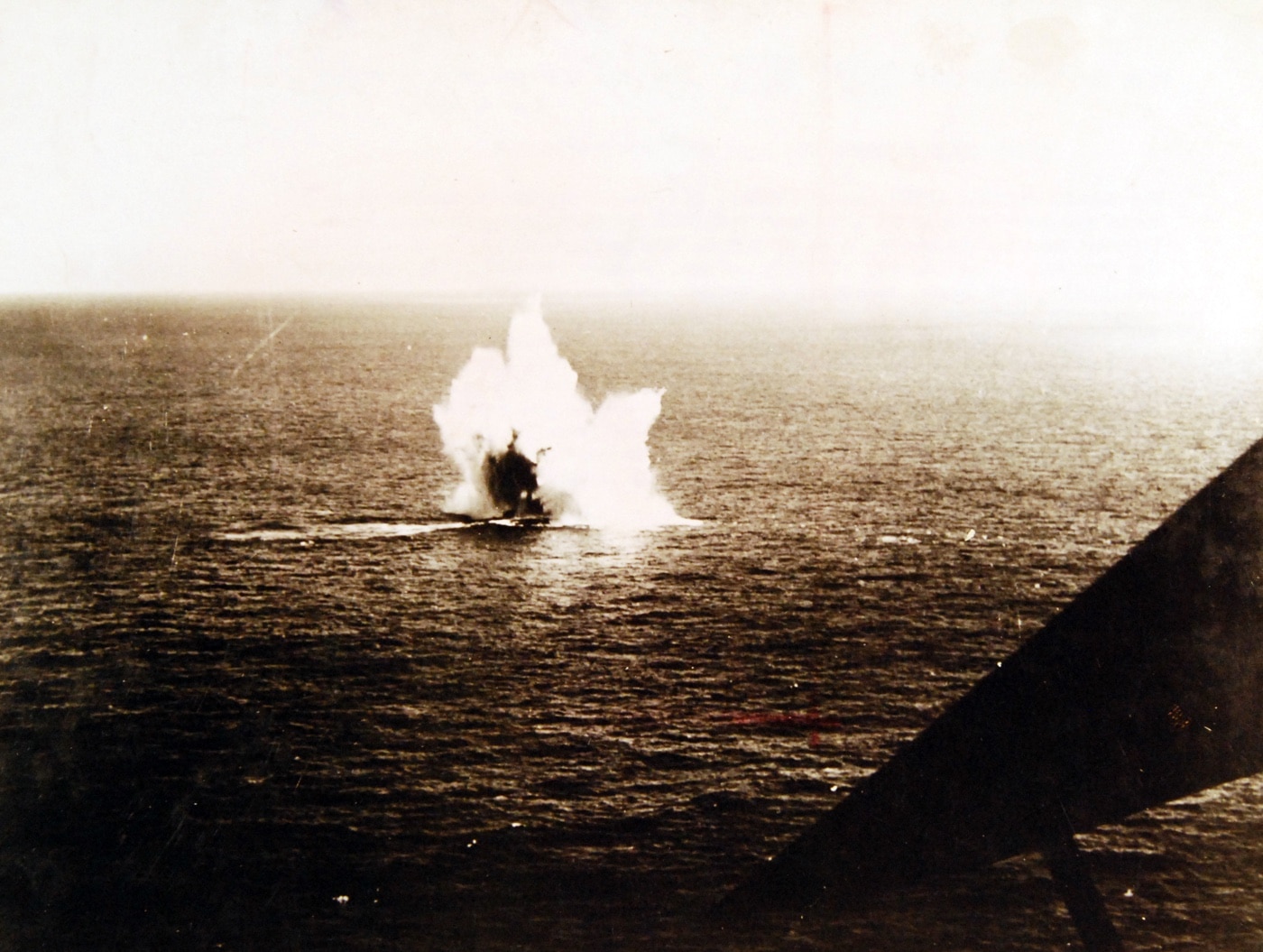
A depth charge dropped from an America PBM explodes next to a German U-boat. Two PBM Mariners and two destroyers worked together to sink U-128 off the coast of Brazil. Image: U.S. Navy
For bombing missions, the U.S. Navy developed a modified version of the Norden bombsight.
Ordnancemen trained with the Norden prior to deployment to the fleet in a PBM.
Attacks were frequently made at less than 500 feet often half or less than that.
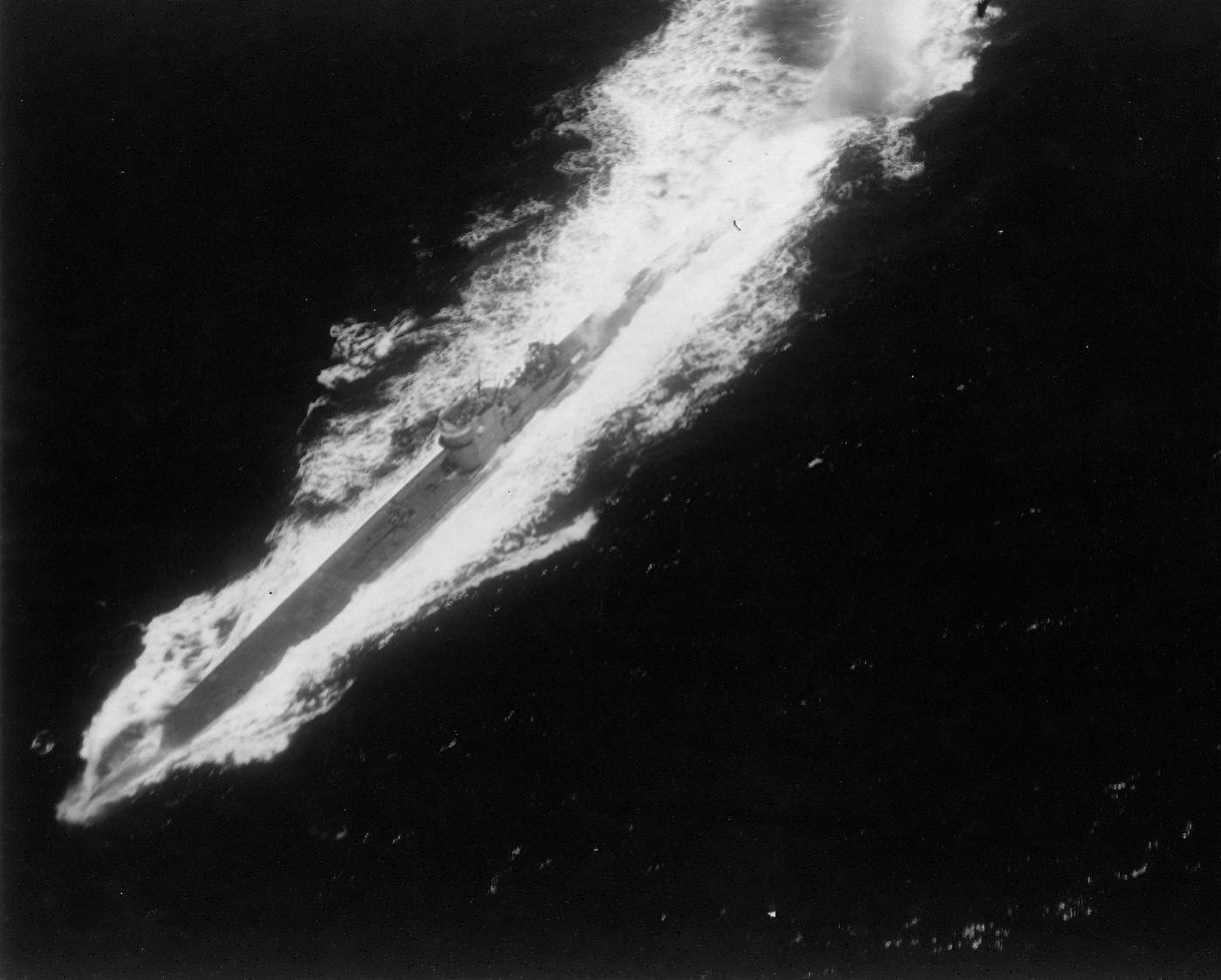
German U-boat U-161 shortly before being sunk by a Martin PBM using depth charges in the Atlantic Ocean. Image: U.S. Navy
By comparison, the smaller B-17 Flying Fortress typically made bombing runs above 20,000 feet.
Dumbo Missions in the Pacific
The United States Navy used the PBM frequently for Dumbo missions.
Frequently, PBMs would coordinate these Dumbo missions with air raids and other military operations.
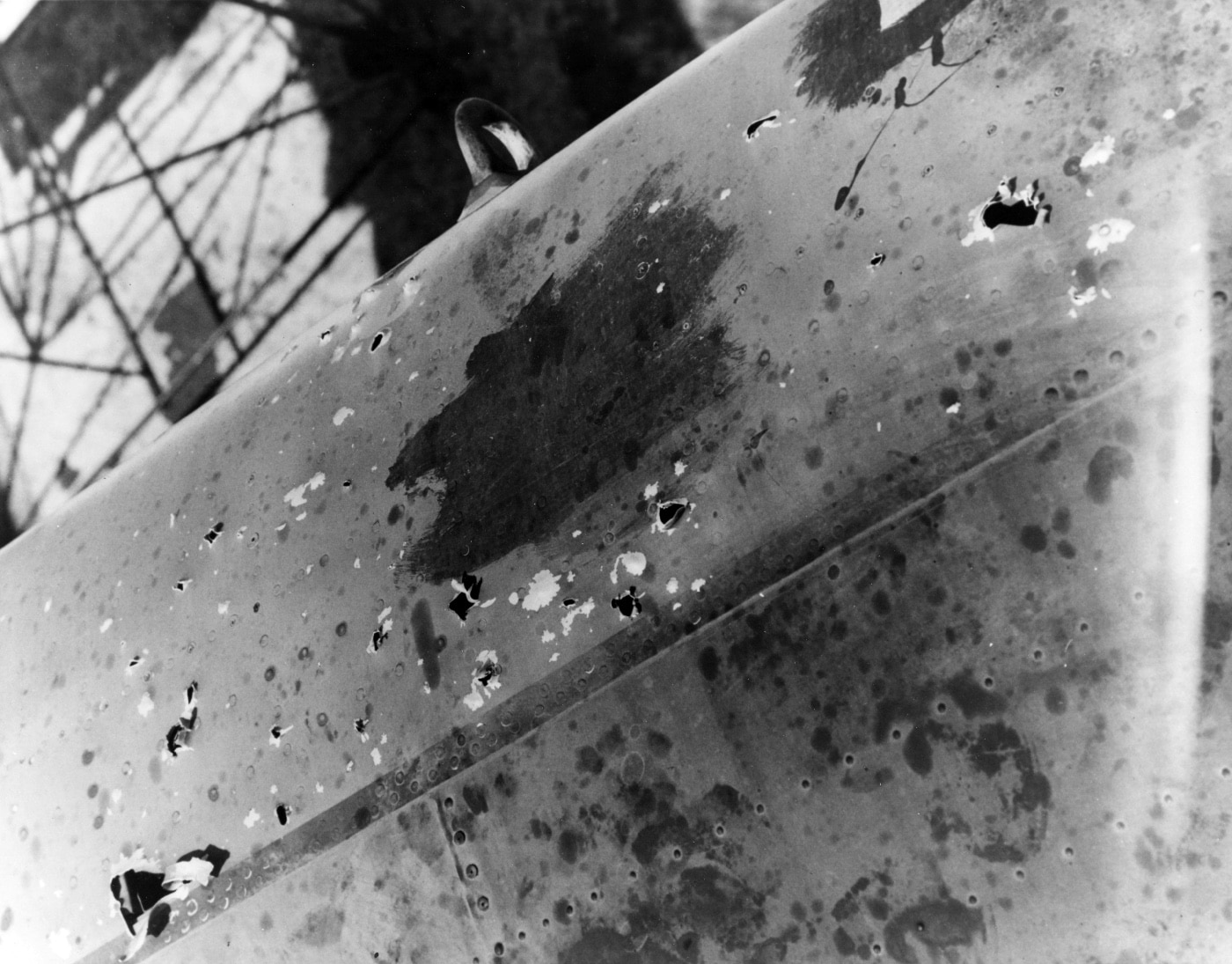
Anti-aircraft gunfire damage to the starboard wing of a Martin PBM patrol bomber received during an attack on an enemy submarine in the Caribbean Sea. Image: U.S. Navy
However, the Dumbo monicker would eventually become synonymous with any search and rescue mission.
The PBM was an excellent Dumbo aircraft due to its long legs and ability to land in the ocean.
Dumbo missions could be long and dull, but they were incredibly successful overall.
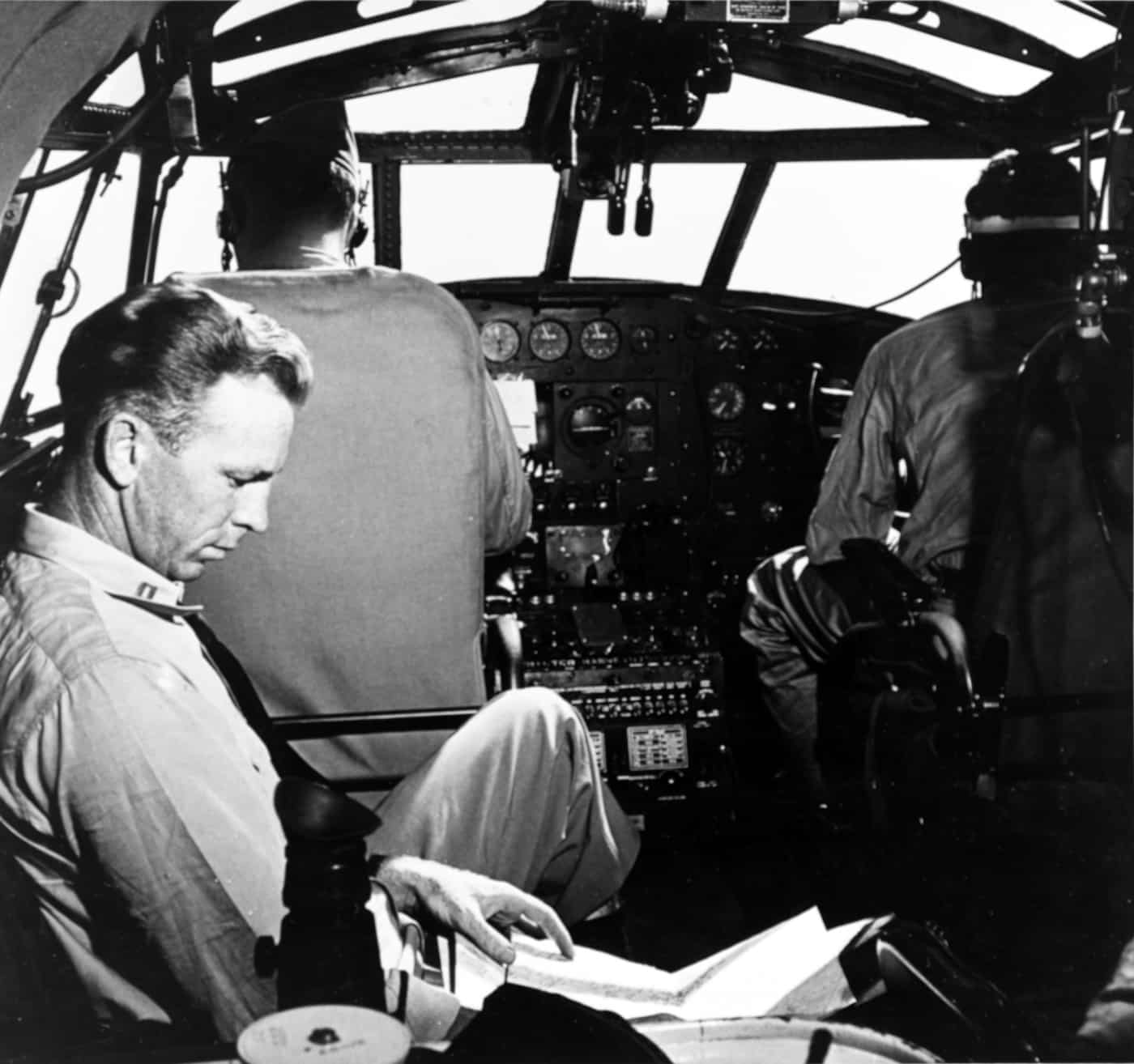
Crew members at work during a Martin PBM flight over the Caribbean Sea in 1943. Image: U.S. Navy
Further, PBM crews were tasked with eliminating enemy mines in harbors and other areas.
The bunkroom had four bunks to allow passengers and crew to get some downtime on long trips.
Likewise, the head was fully functional, albeit modified for a plane.
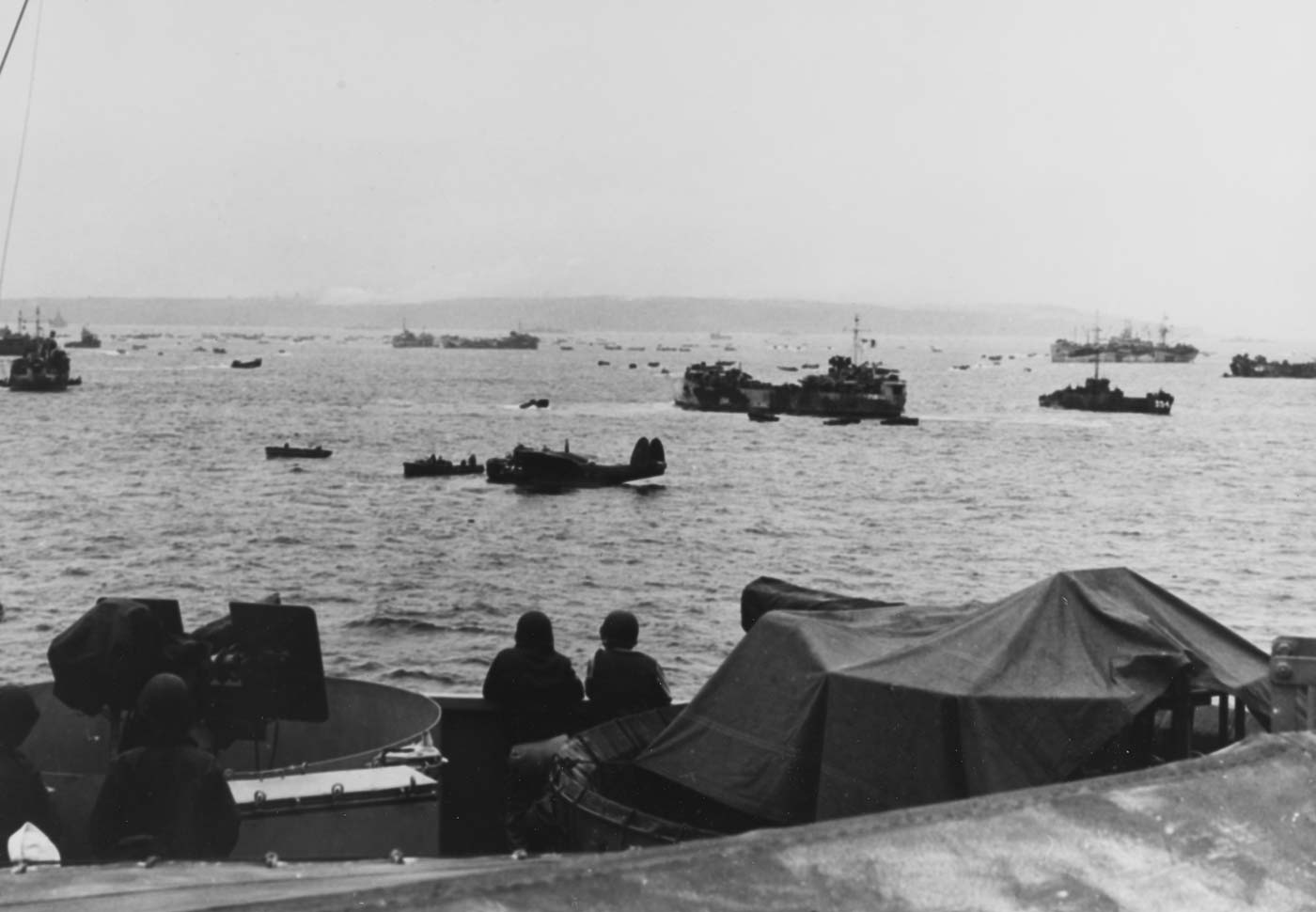
A PBM patrol bomber crew awaits resupply on D+1 during the Battle of Iwo Jima. PBMs performed bombing missions and protected the assembled fleet from Japanese submarines. Image: U.S. Navy
For crews on a long patrol or ferry, these amenities were priceless.
Likewise, they made the plane suitable for transport of flag officers and other dignitaries.
Simply speaking, getting big planes into the air from the water takes time and space.
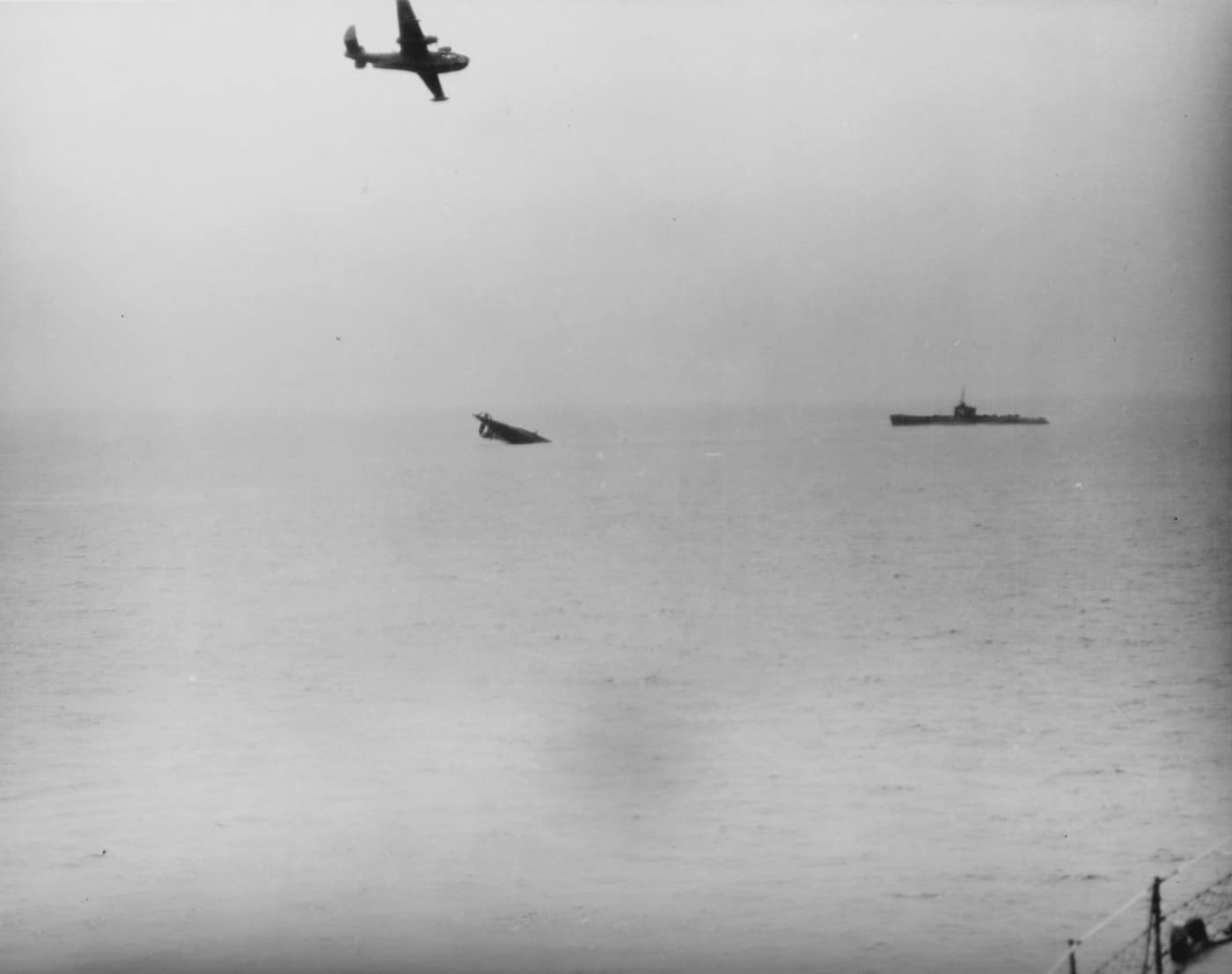
A PBM scuttles two Japanese I-boat submarines in 1946 as part of the terms of surrender ending World War II.
Choppy water makes takeoff even more difficult.
In the end, however, a simpler solution was utilized: jets.
Jet-assisted take-off (JATO) canisters were fitted to some PBM planes.
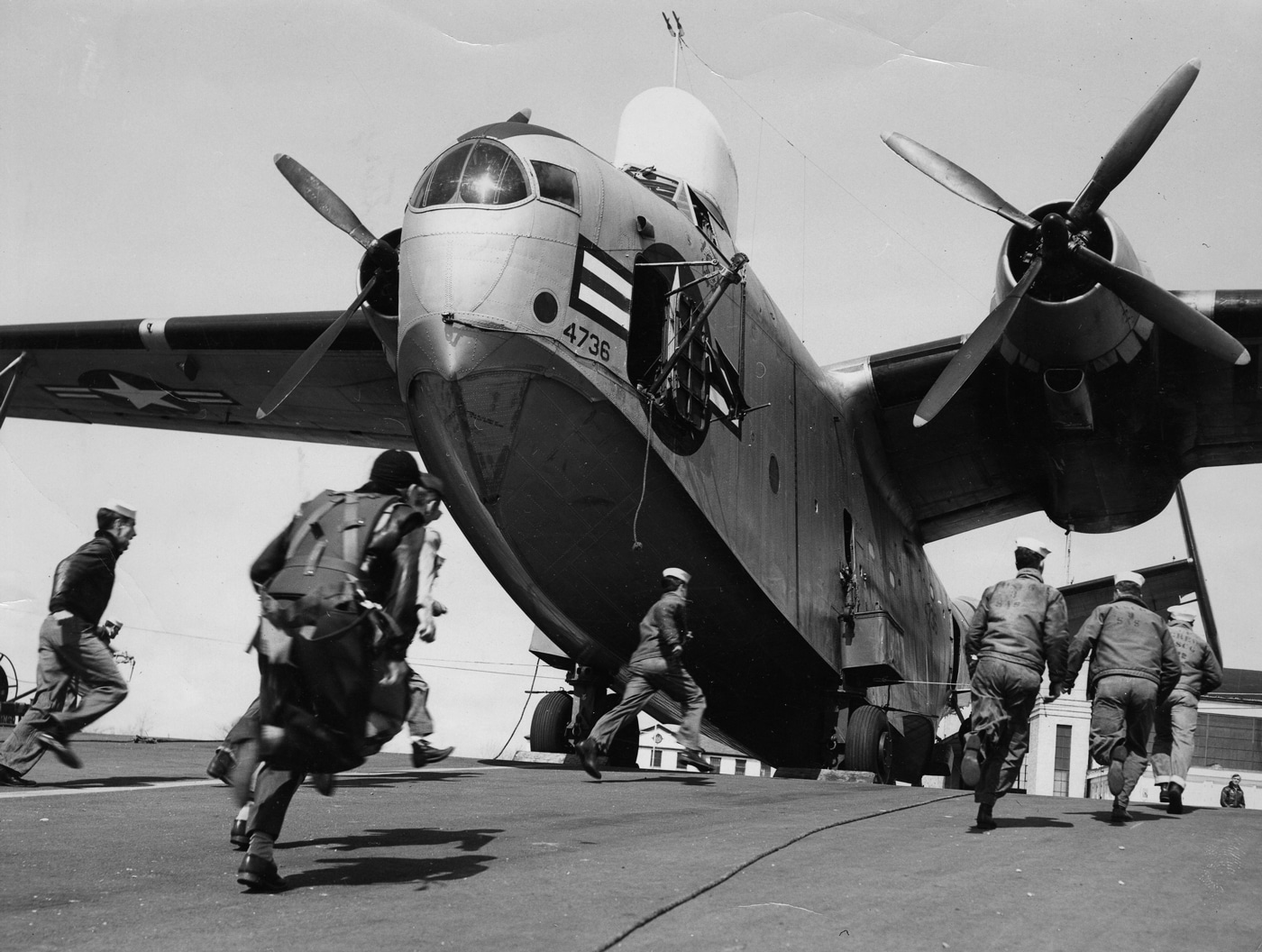
A Martin PBM Mariner’s crew scrambles in response to a SAR call in the late 1940s. Image: U.S. Coast Guard
These canisters were used to shorten the take-off distance substantially especially on rough waters.
The United Kingdoms Royal Air Force received 54 PBM patrol bombers.
After testing, however, the Brits believed the planes were too taxing on their pilots to fly.
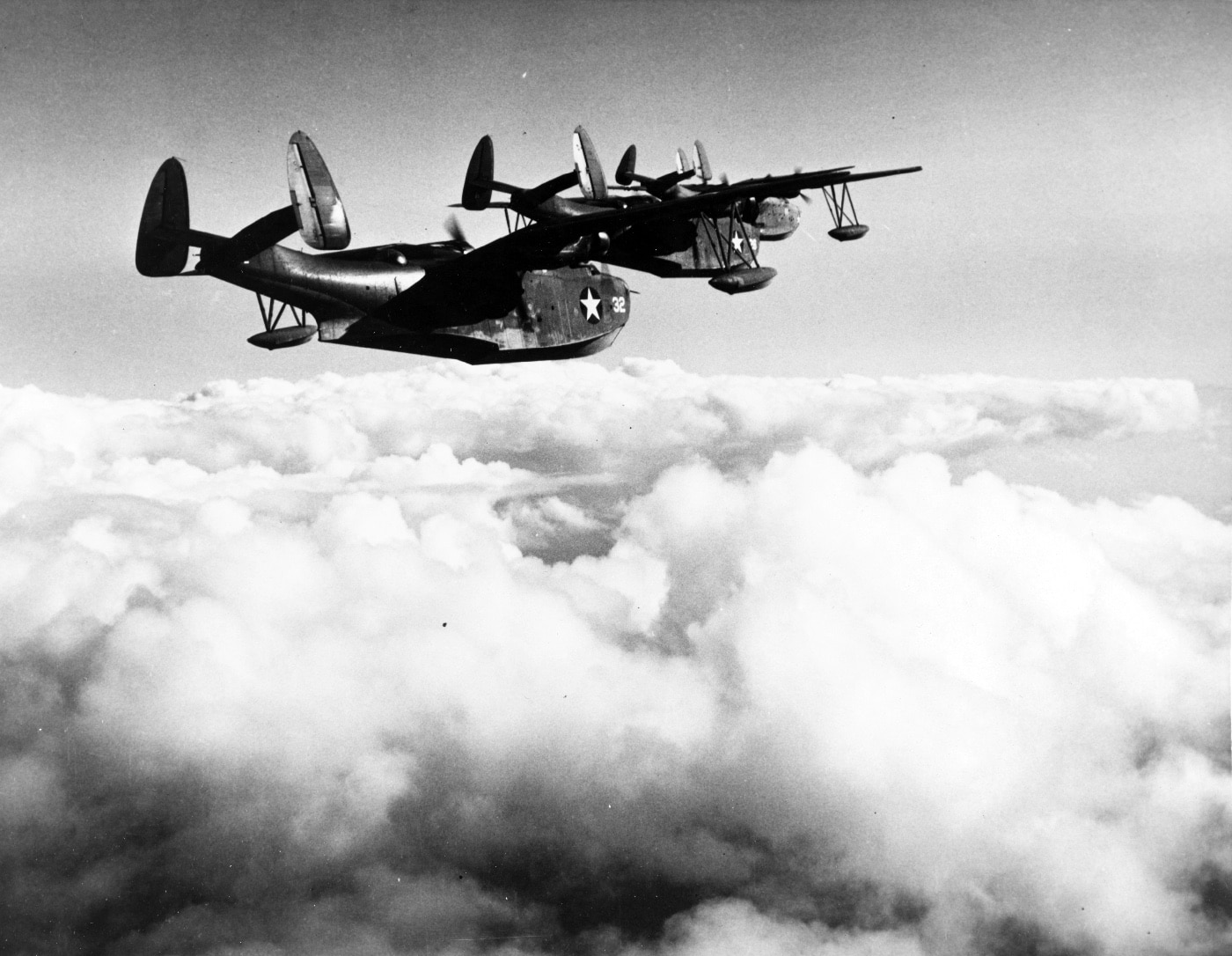
A pair of Martin PBM-3 patrol bombers fly in formation with a PMB-1 near Florida in March 1943. Image: Lt. Victor Jorgensen/U.S. Navy
They wound up returning all of the PBMs without flying any of them in combat.
He almost never talked about World War II or Korea.
Martin PBM Mariners saw combat in World War II and the Korean War.
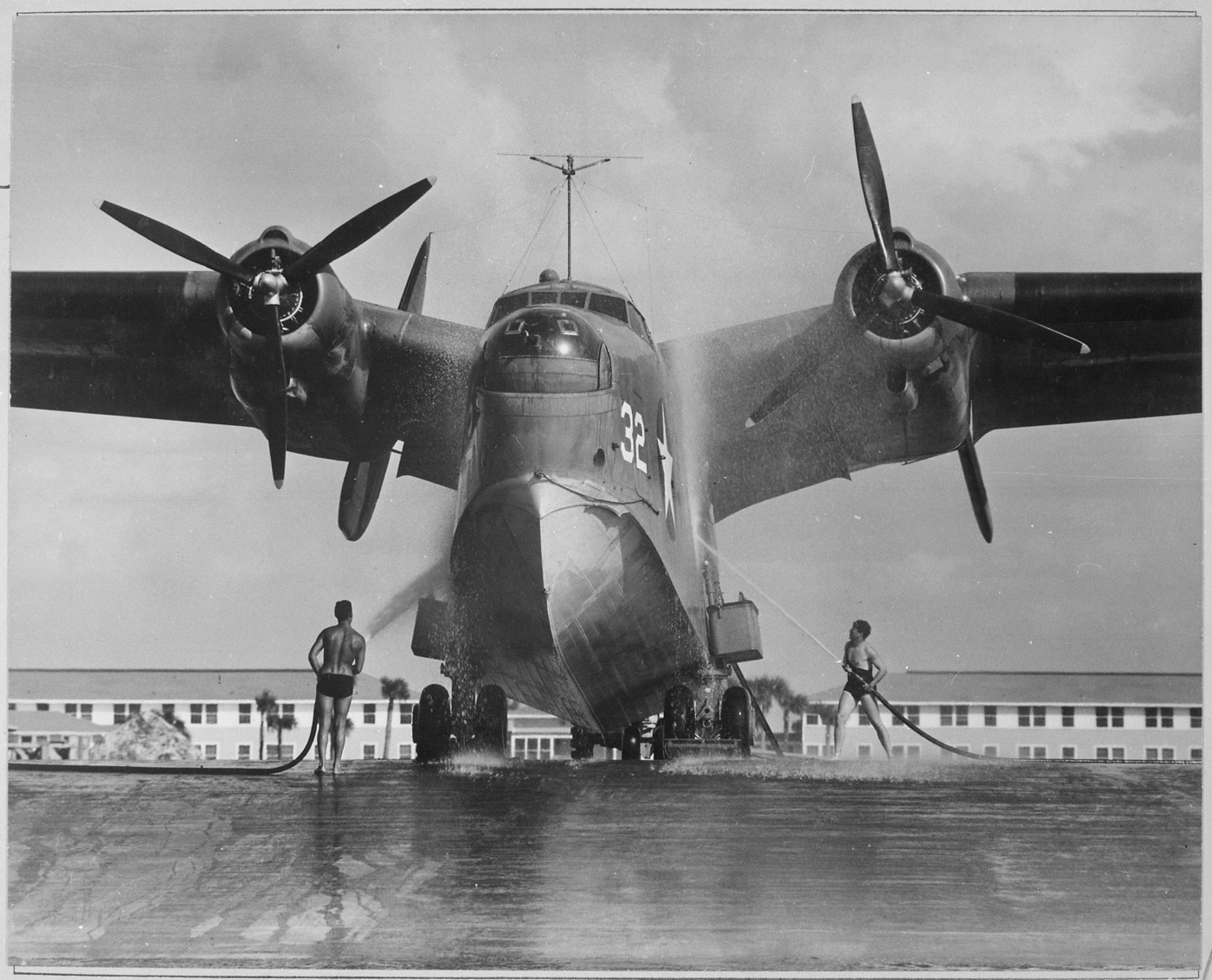
A Martin PBM is hosed down after it was beached at Naval Air Station Banana River in Florida. NAS Banana River would later become Patrick Space Force Base. Image: NARA
Theyve engaged in combat against the communists of both China and the Soviet Union outside of declared hostilities.
Yet, attempt to find a single PBM in a movie.
There is one surviving PBM flying boat in the world.
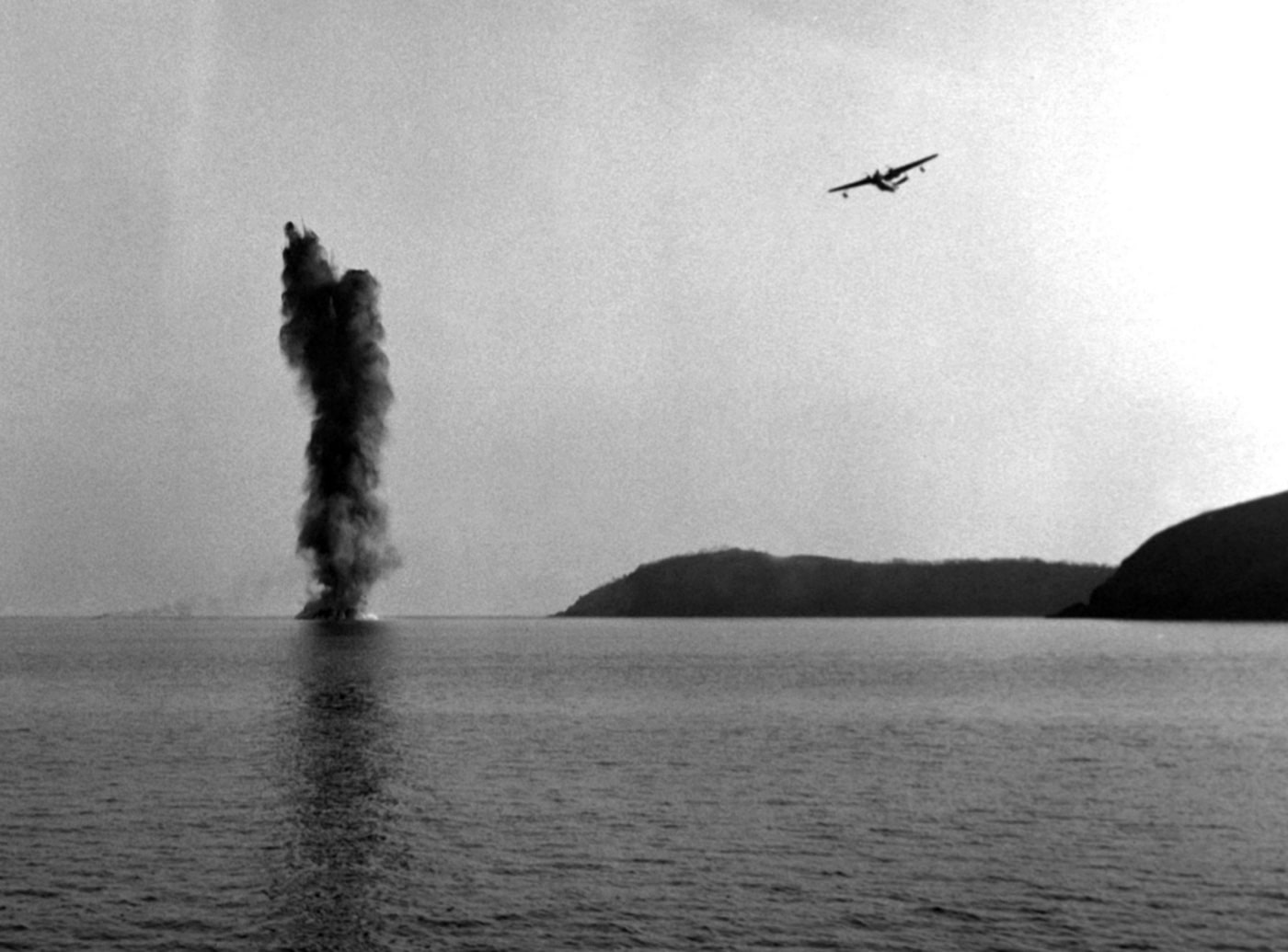
During the Korean War, a U.S. Navy Martin PBM-5 Mariner detonates a moored enemy mine near Chinnampo, Korea, on December 5, 1950. Image: NARA
Interestingly, it is one of only 40 PBM aircraft that was built or retrofitted with retractable landing gear.
Located in Tucson, Arizona, the museum is open every day of the week.
If you have the chance, I recommend visiting and checking out its massive collection.
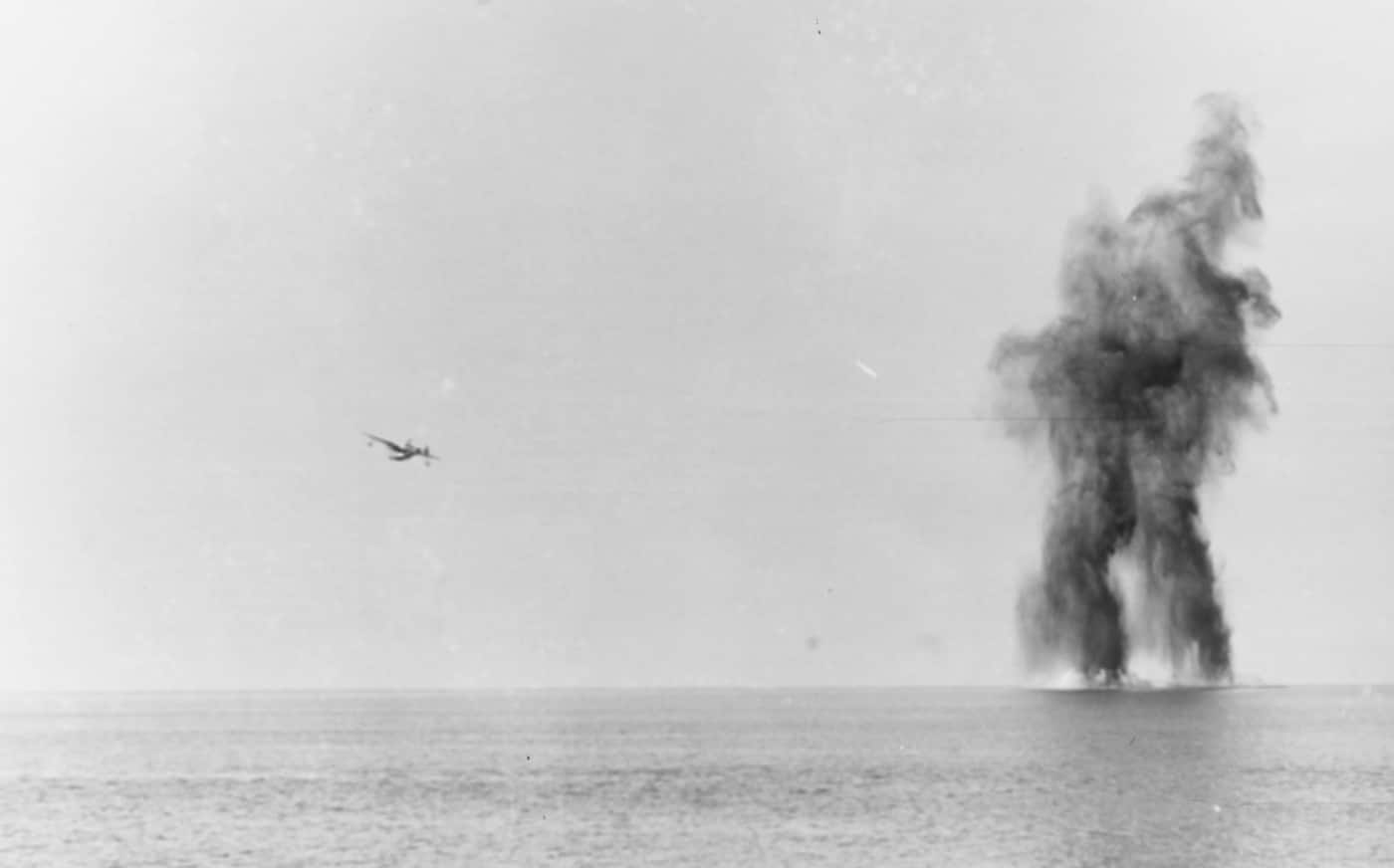
Martin PBM Mariner patrol bomber explodes North Korean sea mines supplied by the Soviet Union with machine gun fire in the Fall of 1950. Image: U.S. Navy
Go to forum thread
Pima Air & Space Museum
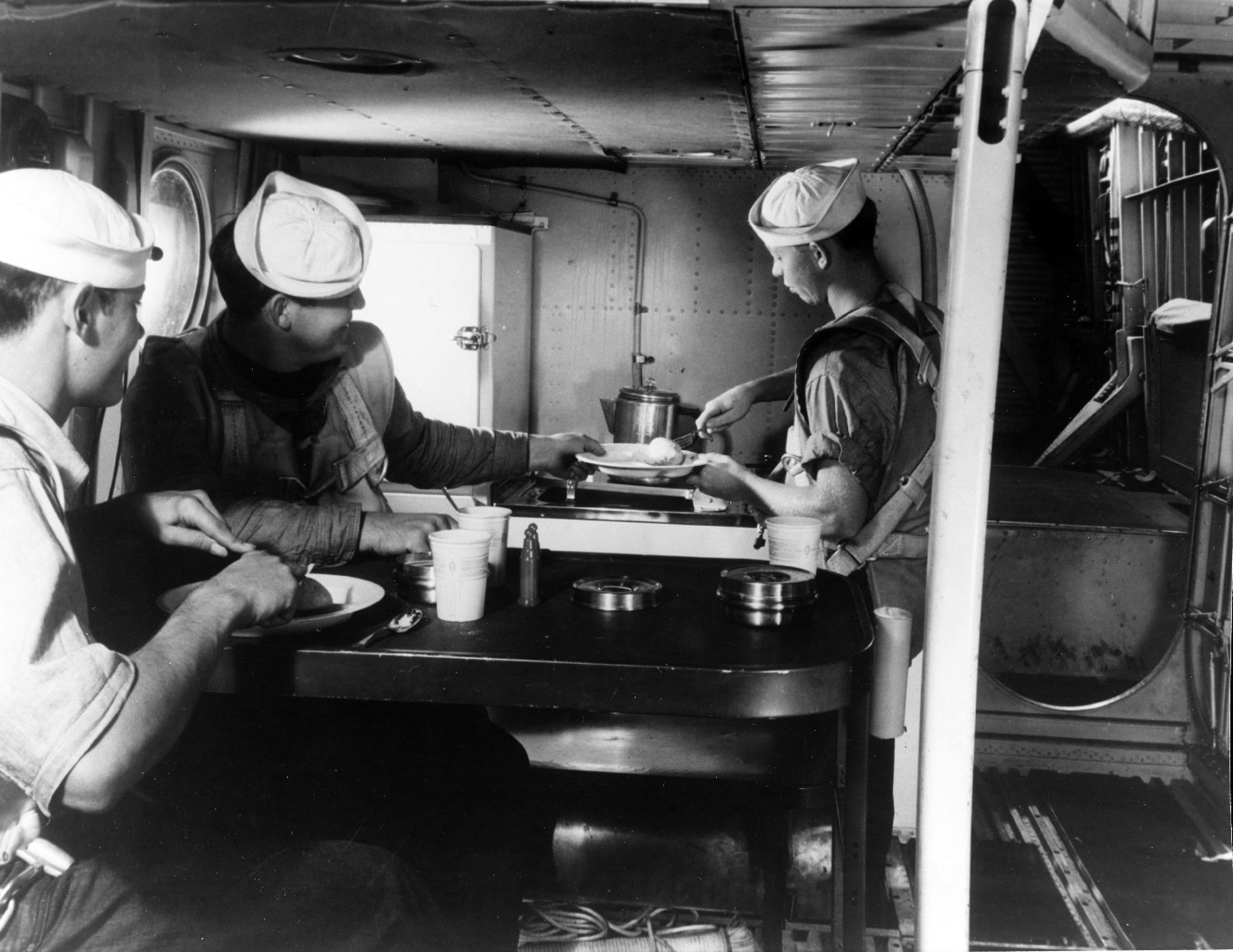
Crewman of a PBM-3 eat in the plane’s galley compartment during a flight from Naval Air Station Norfolk in September 1942. Image: U.S. Navy
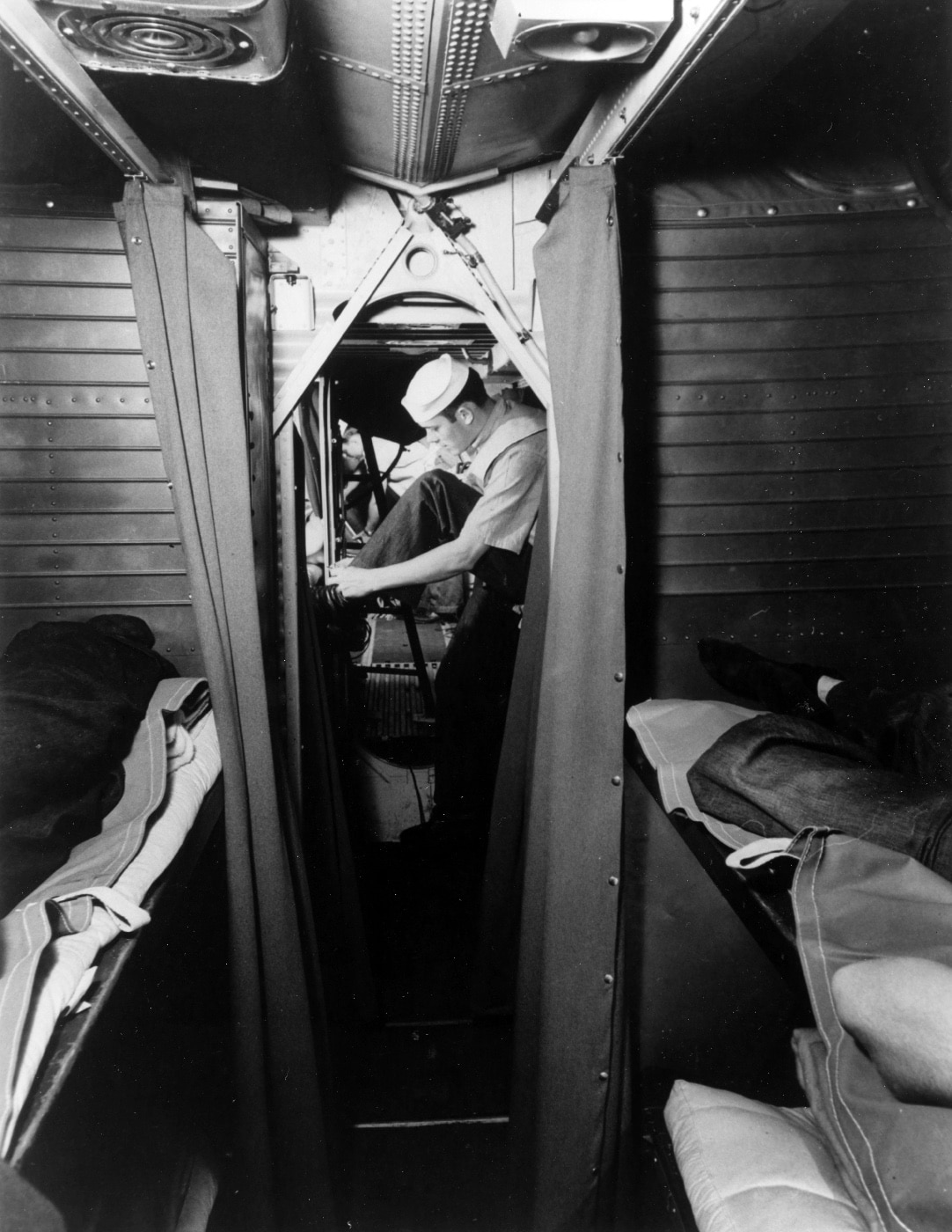
The Martin PBM Mariner had a crew berthing area which allowed men to get sleep on long flights or when tied up to a tender between missions. Image: U.S. Navy
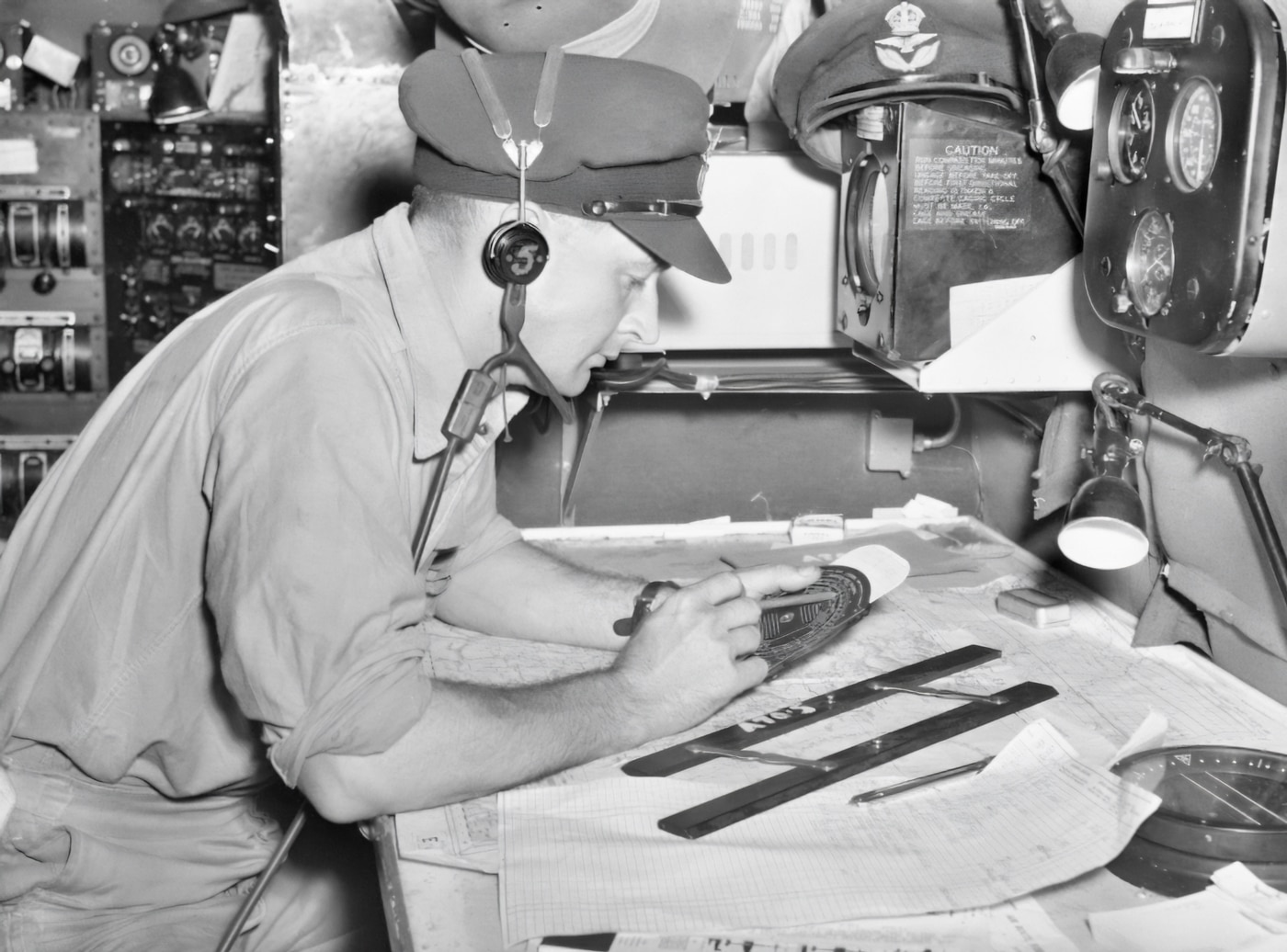
The navigator of Martin PBM Mariner flying boat uses a navigation computer to obtain corrected air speed. This PBM is in the service of the Royal Australian Air Force. Image: AWM
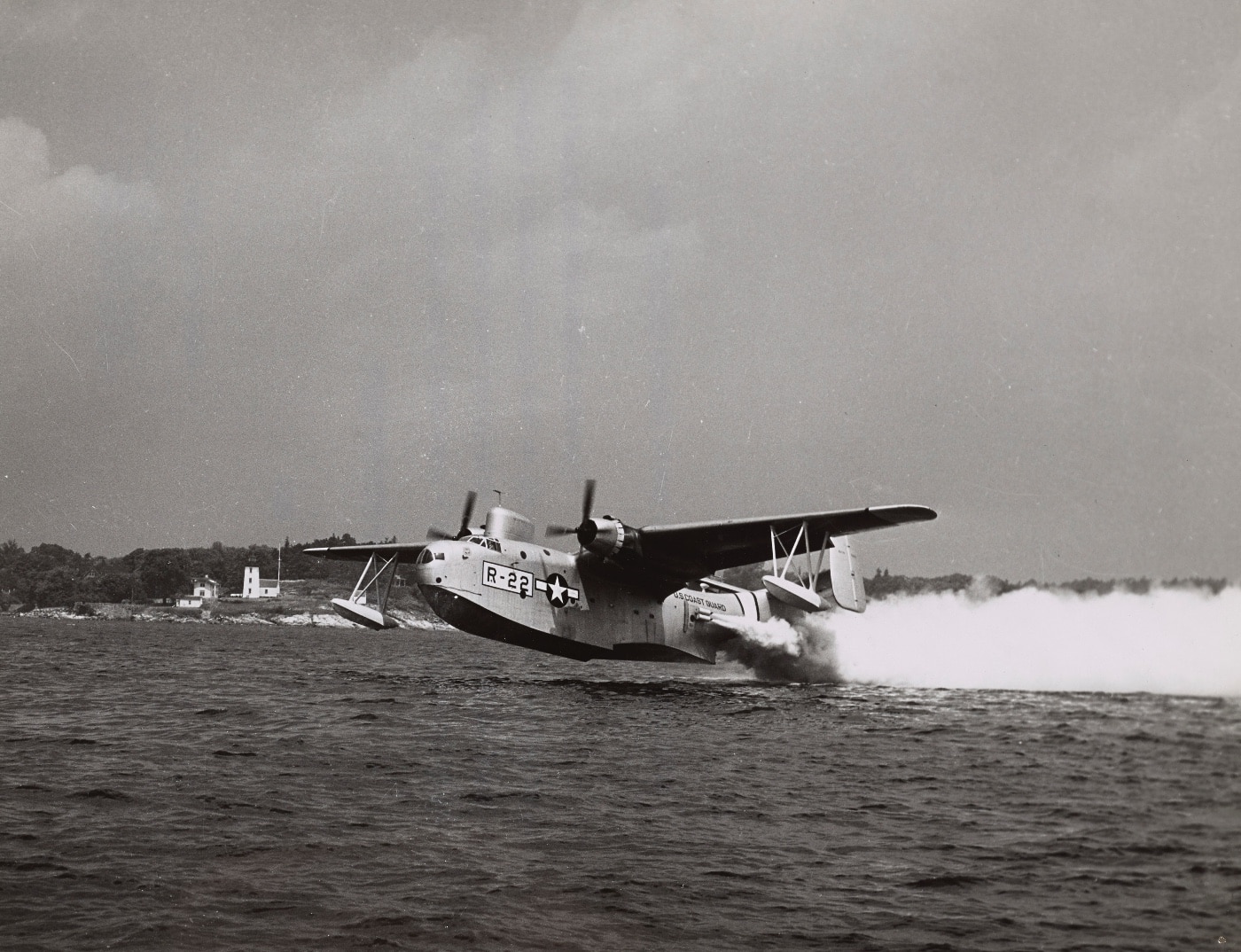
A Coast Guard PBM-5 plane makes a jet assisted take-off. Jets made it possible for shorter take-offs and carrying heavier loads than normally permitted. Image: NARA
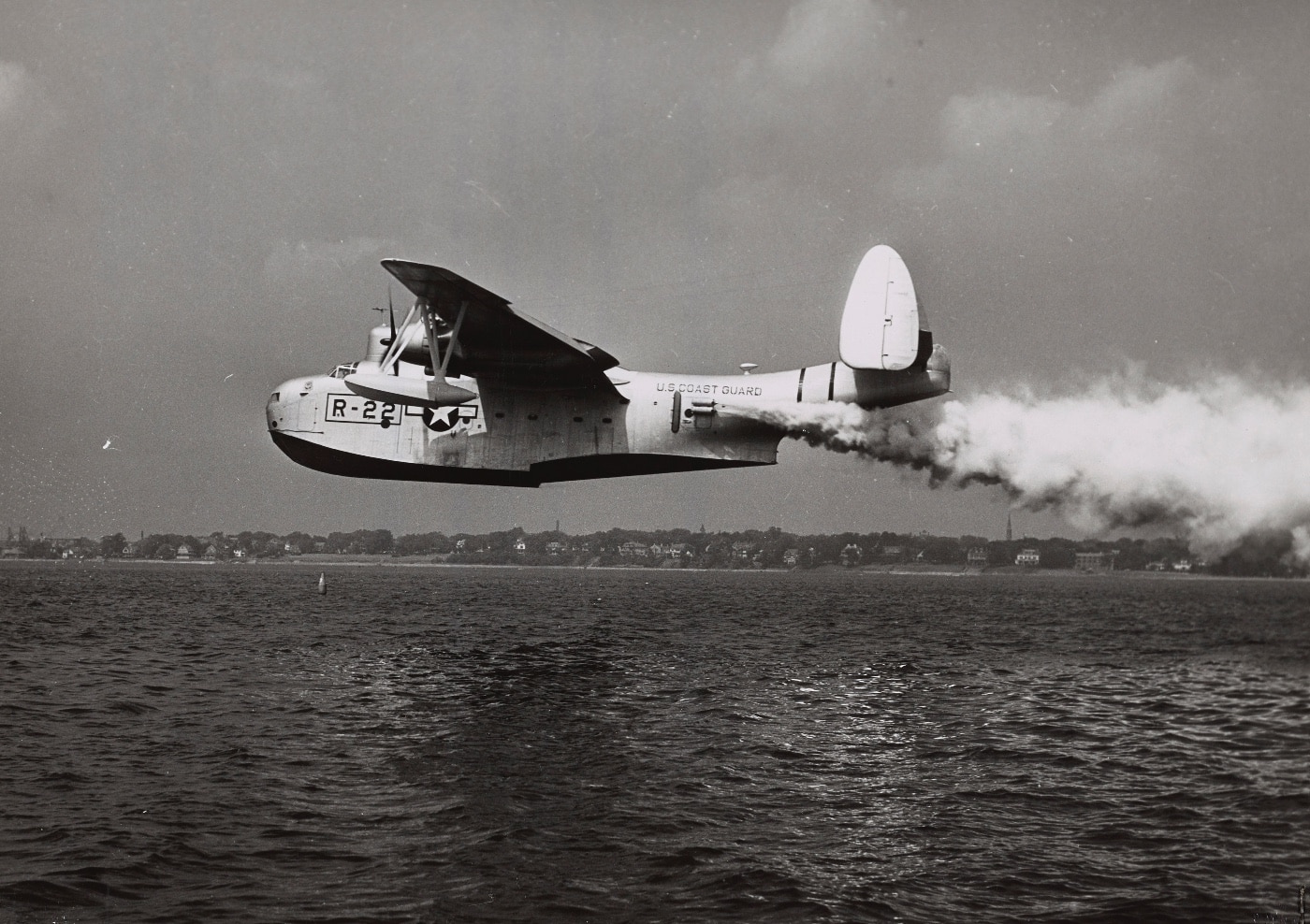
The JATO packs are better seen in this photo if a U.S. Coast Guard Martin PBM. The JATO packs were only available on certain modified PBM airplanes. Image: NARA
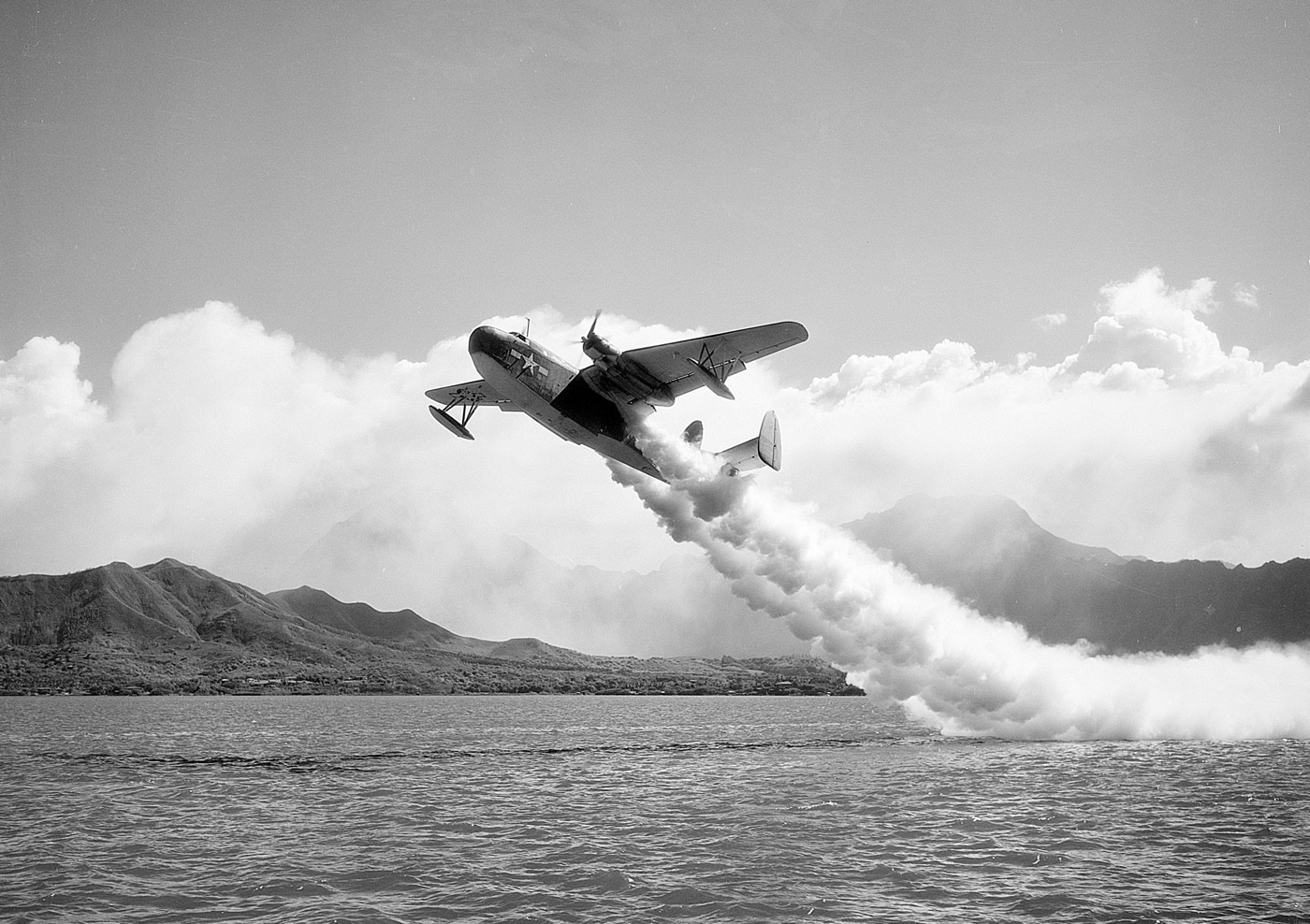
A PBM Mariner uses JATO packs in the Pacific Theater during 1944. It is not known how many PBM patrol bombers operationally deployed with JATO canisters. Image: NARA
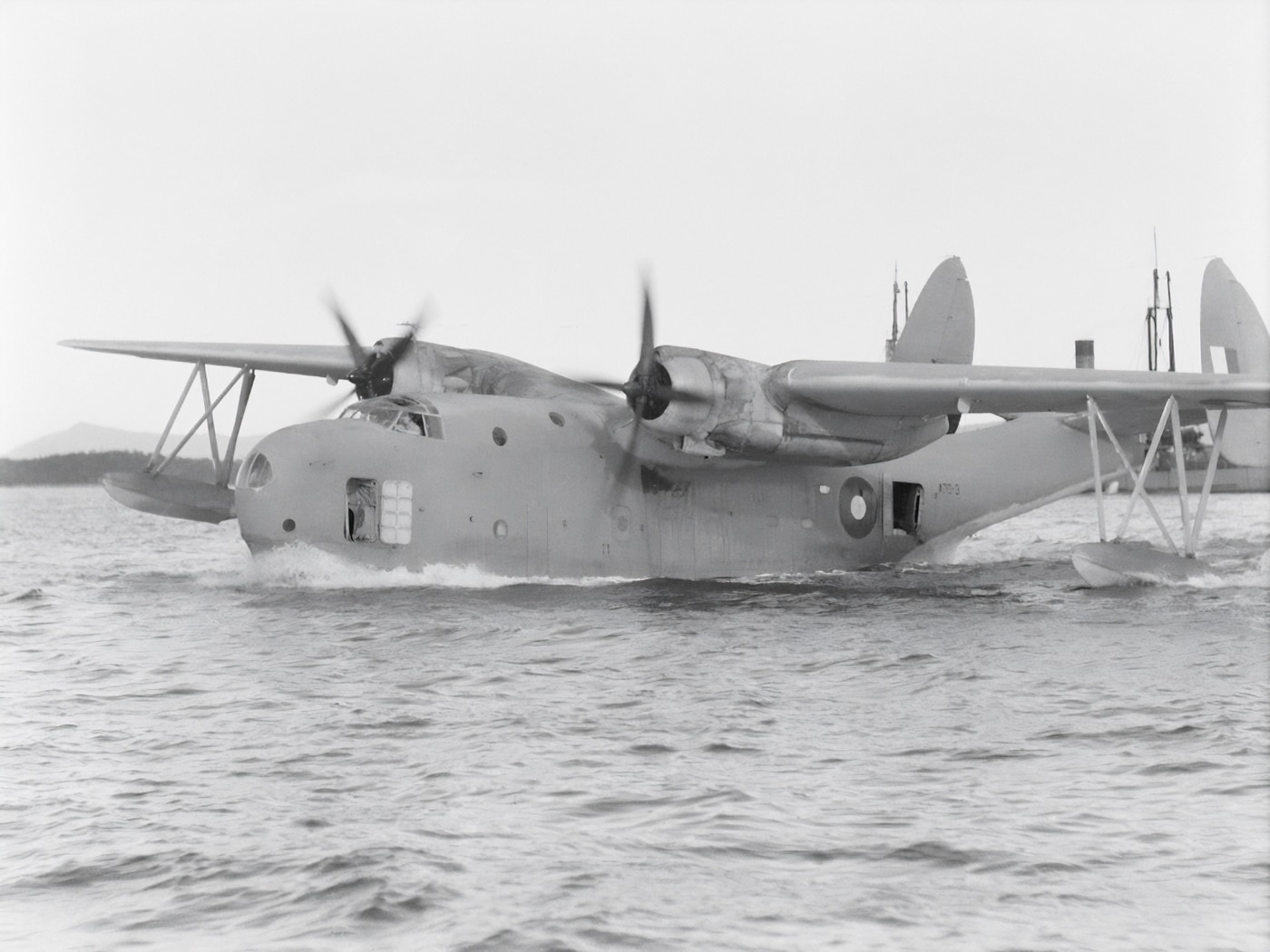
A Royal Australian Air Force PBM (serial# A70-3) prepares for take-off. Australia used the PBM solely for transport and they were not armed with defensive weaponry. Image: John T. Harrison/Public Domain
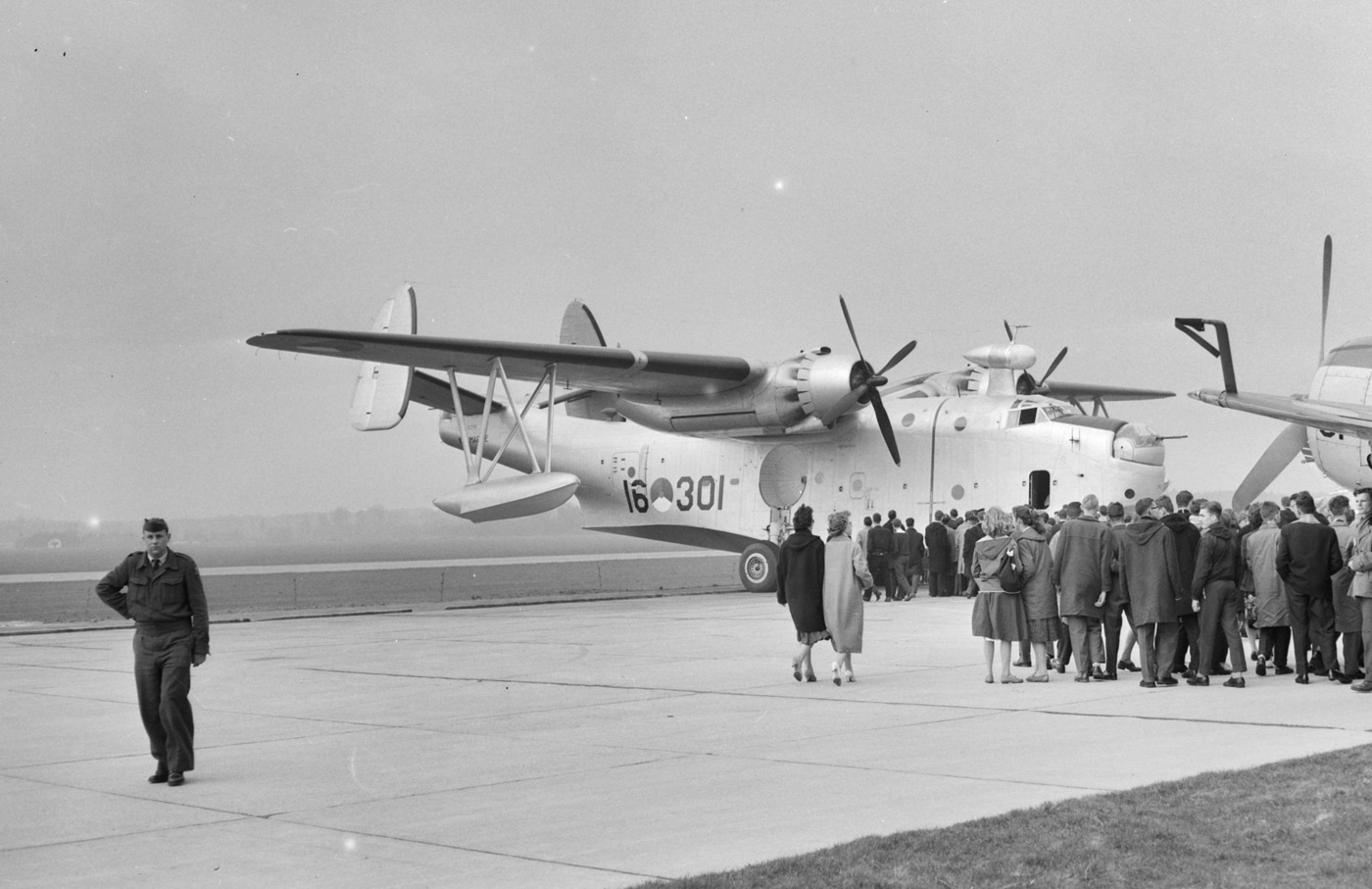
A Martin PBM-5A Mariner patrol bomber of the Naval Aviation Service of the Royal Netherlands Navy. Image: Nationaal Archief
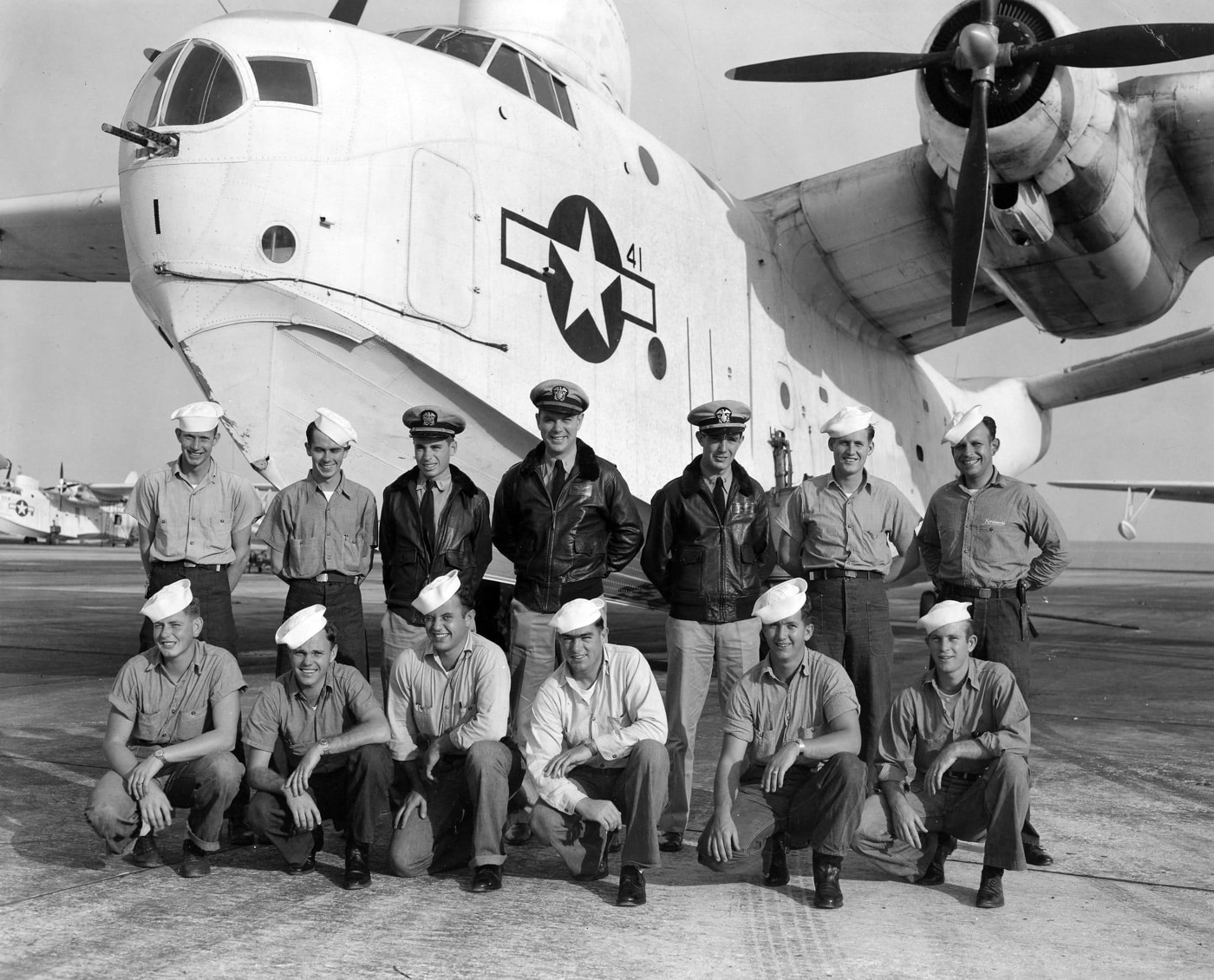
In 1945, the crew of PBM Mariner #41 poses for a photo. This plane was assigned to the U.S. Atlantic Fleet, Air Wing Twelve Headquarters Squadron. Image: Nancy Heilhecker/U.S. Navy
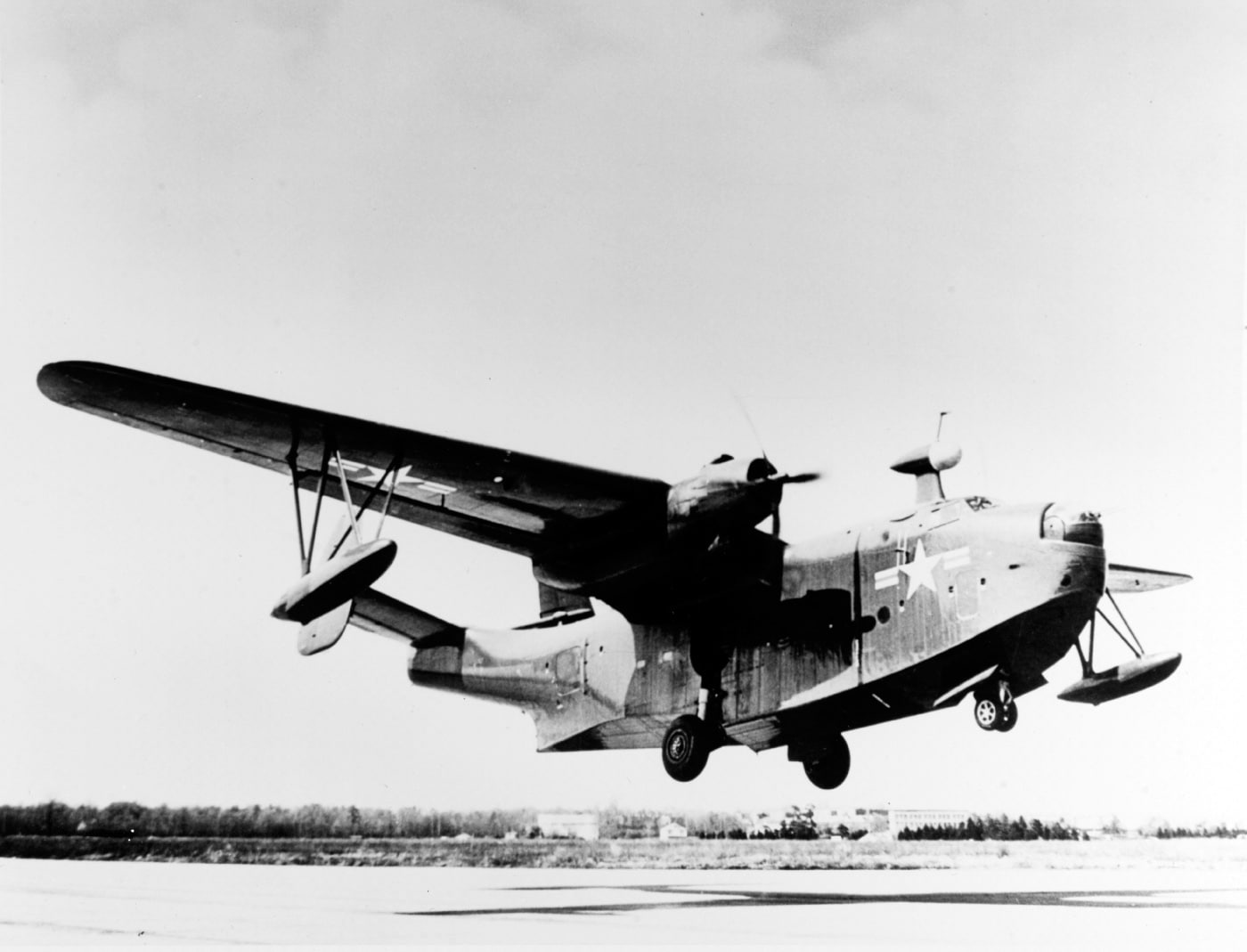
A PBM-5A takes off from the Martin Company airport in Middle River, Maryland, circa 1948. The -5A was the only model built with retractable landing gear. Image: U.S. Navy
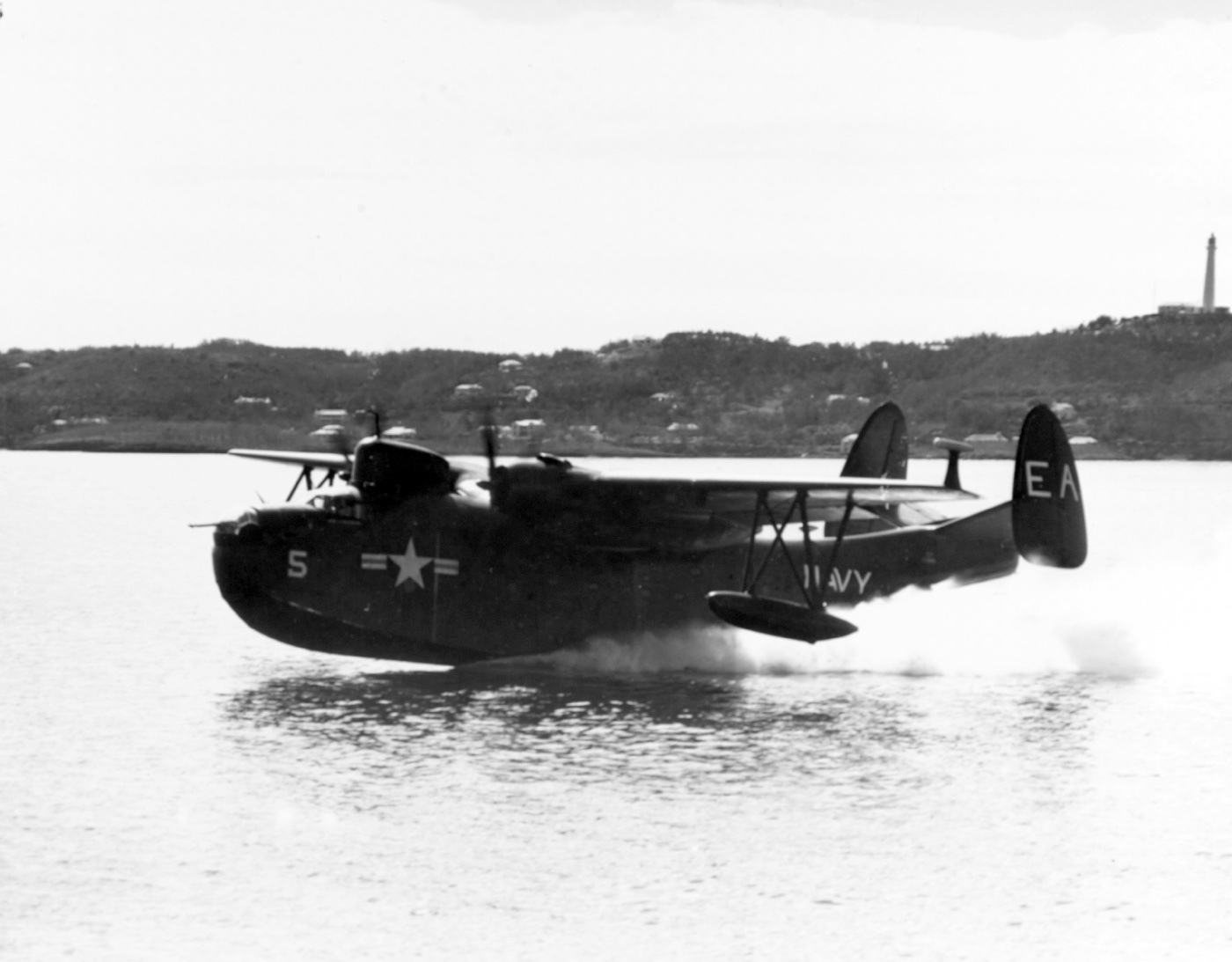
A PBM-5 Mariner patrol bomber takes off from Naval Air Station Bermuda in March 1951. Gibb’s Hill Lighthouse is visible in the upper right. Image: U.S. Navy





